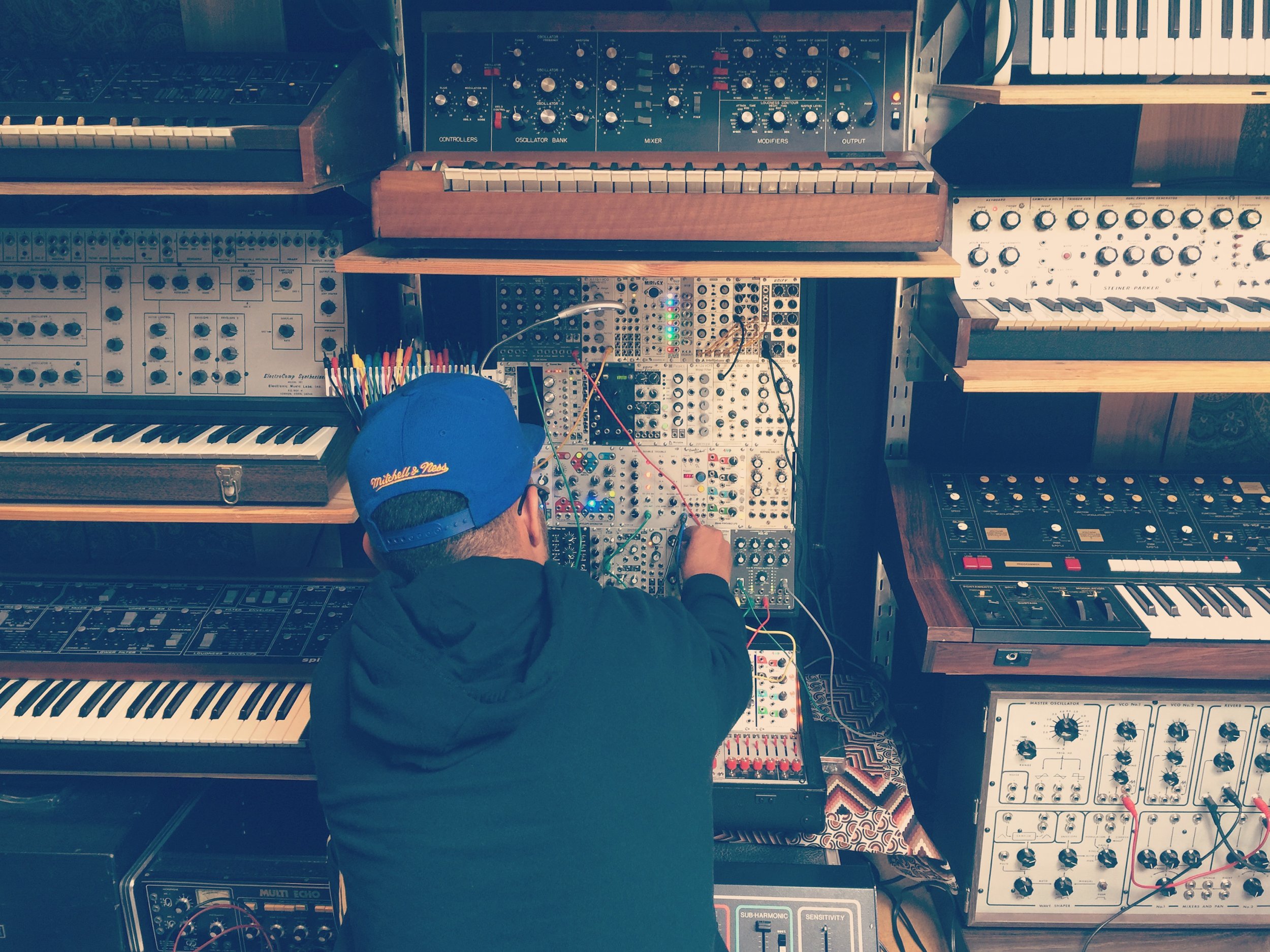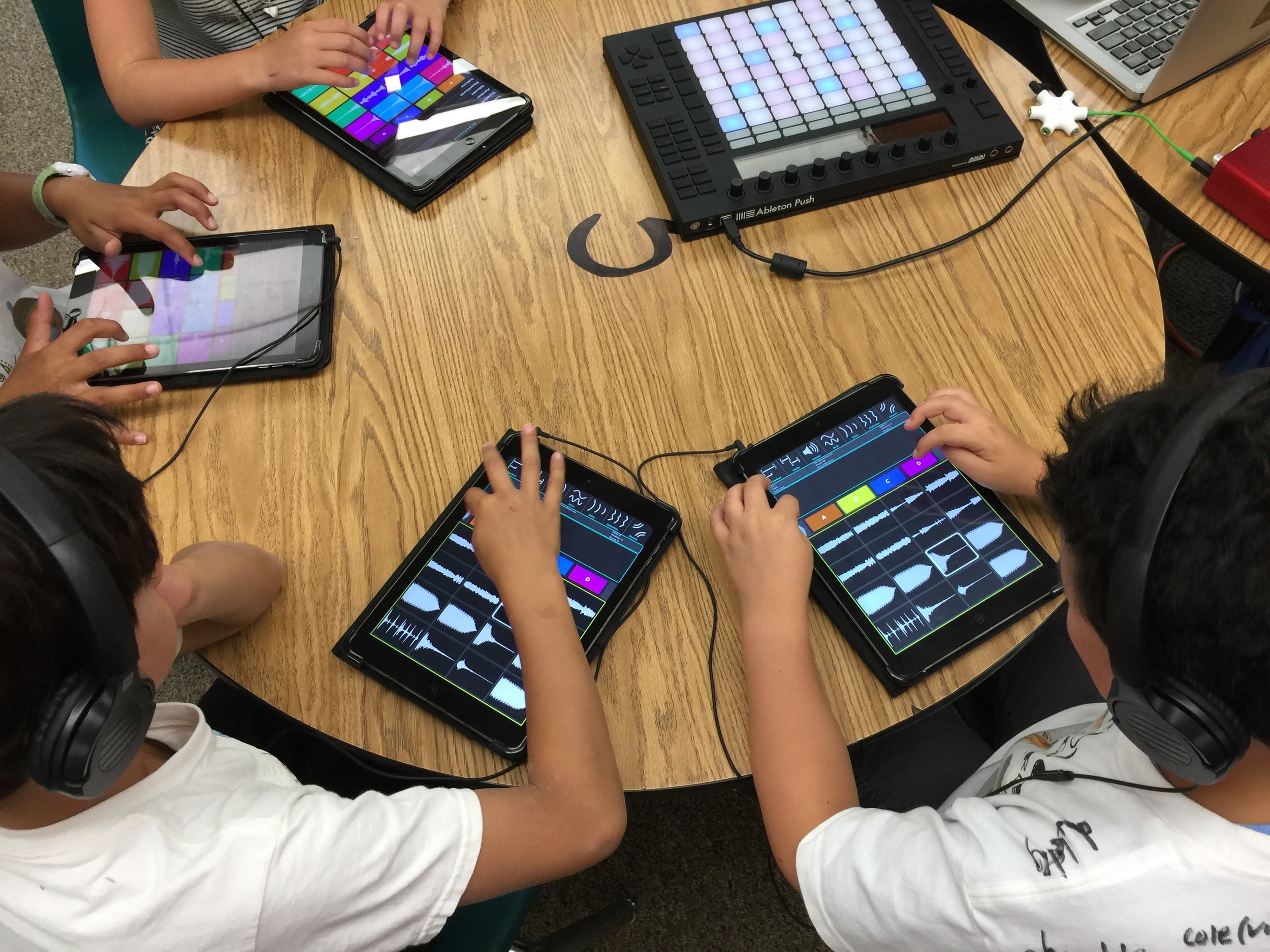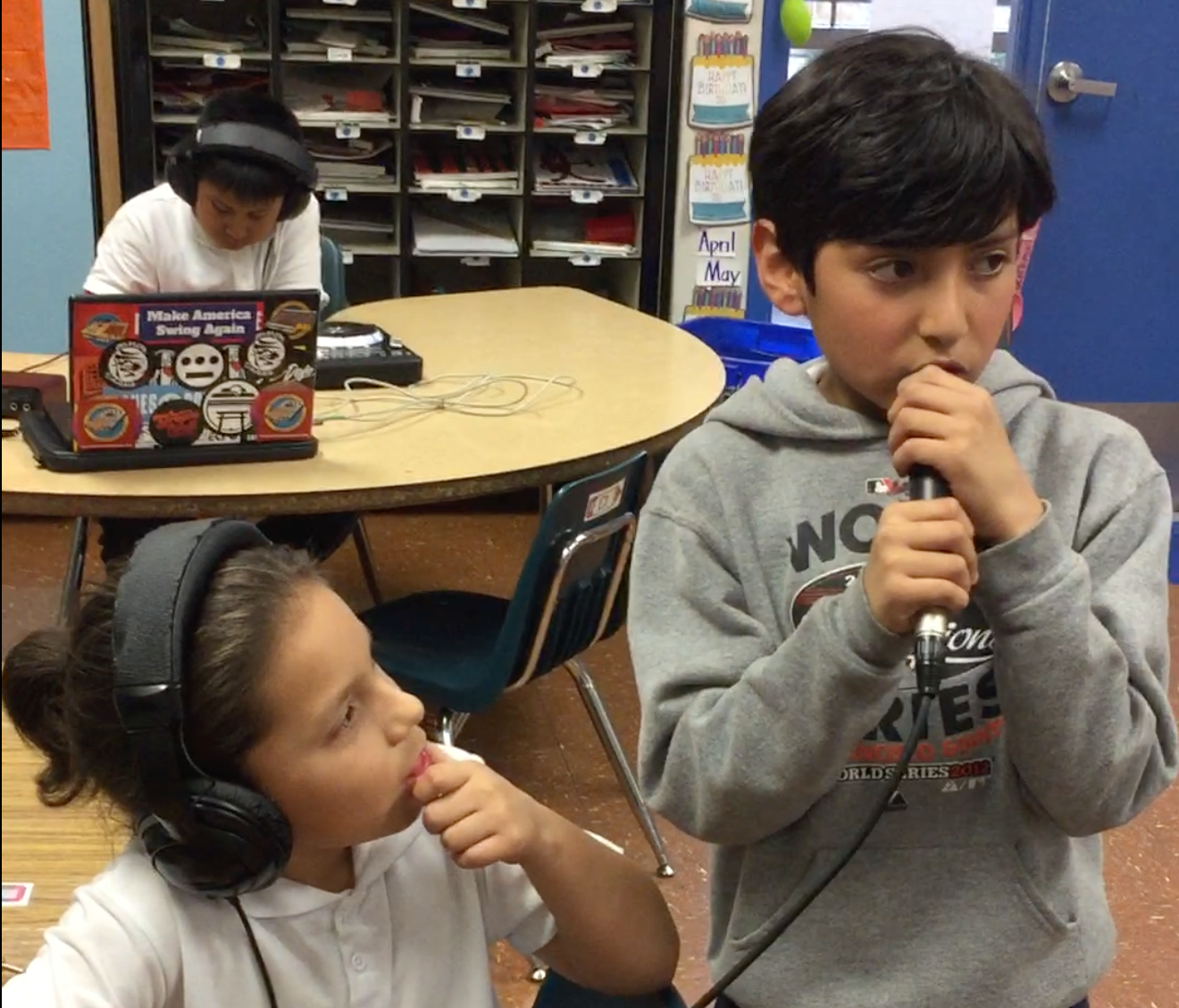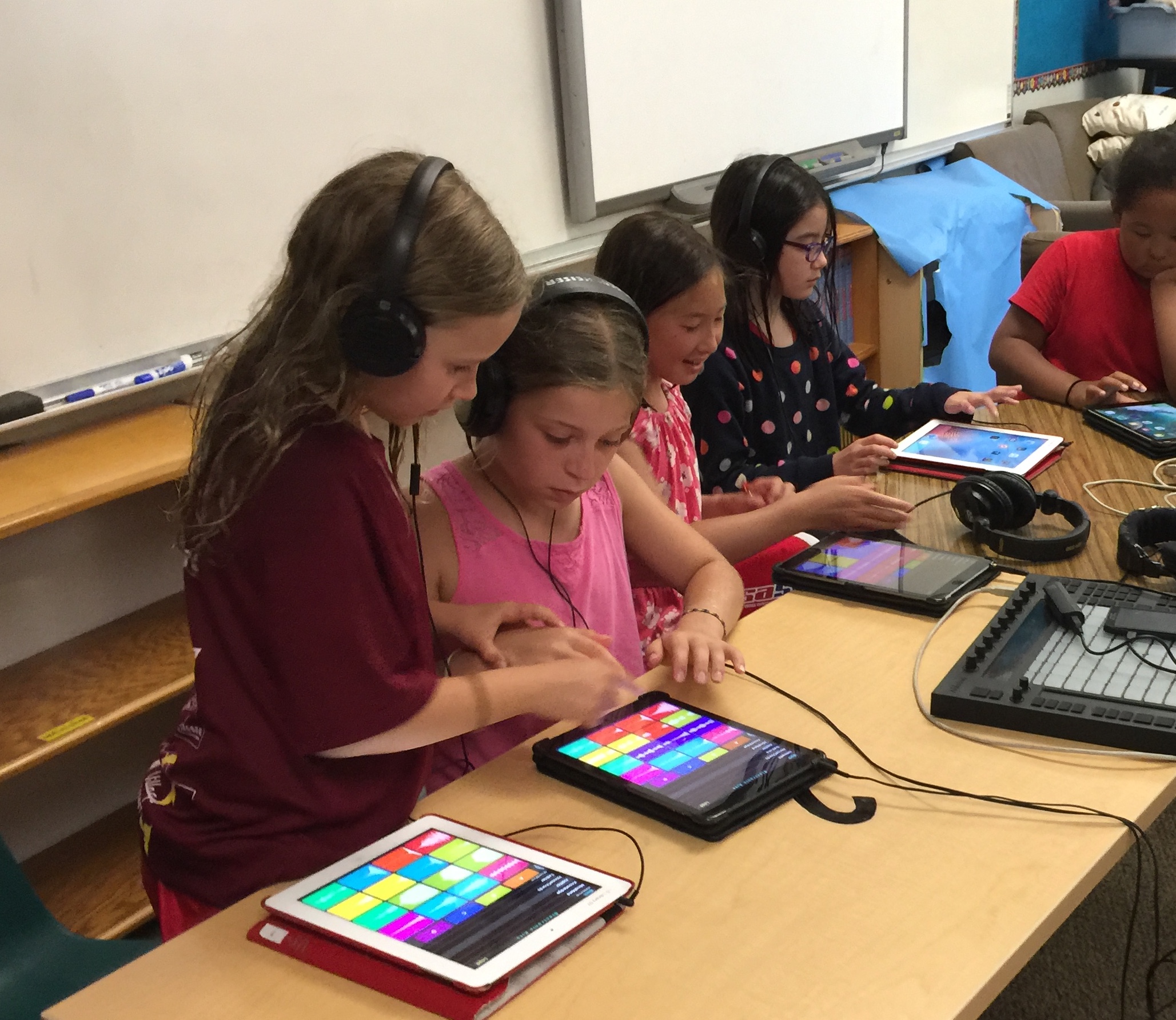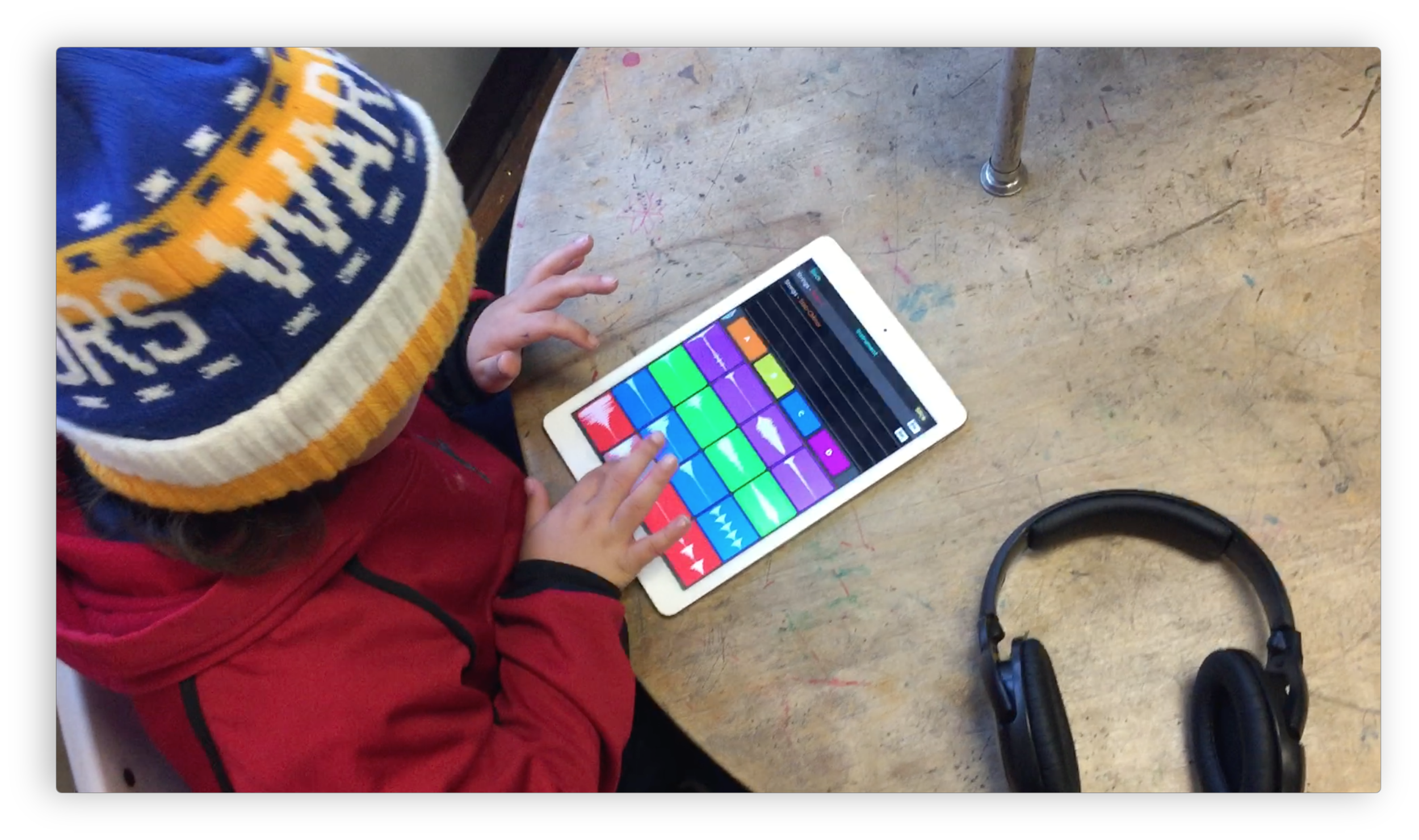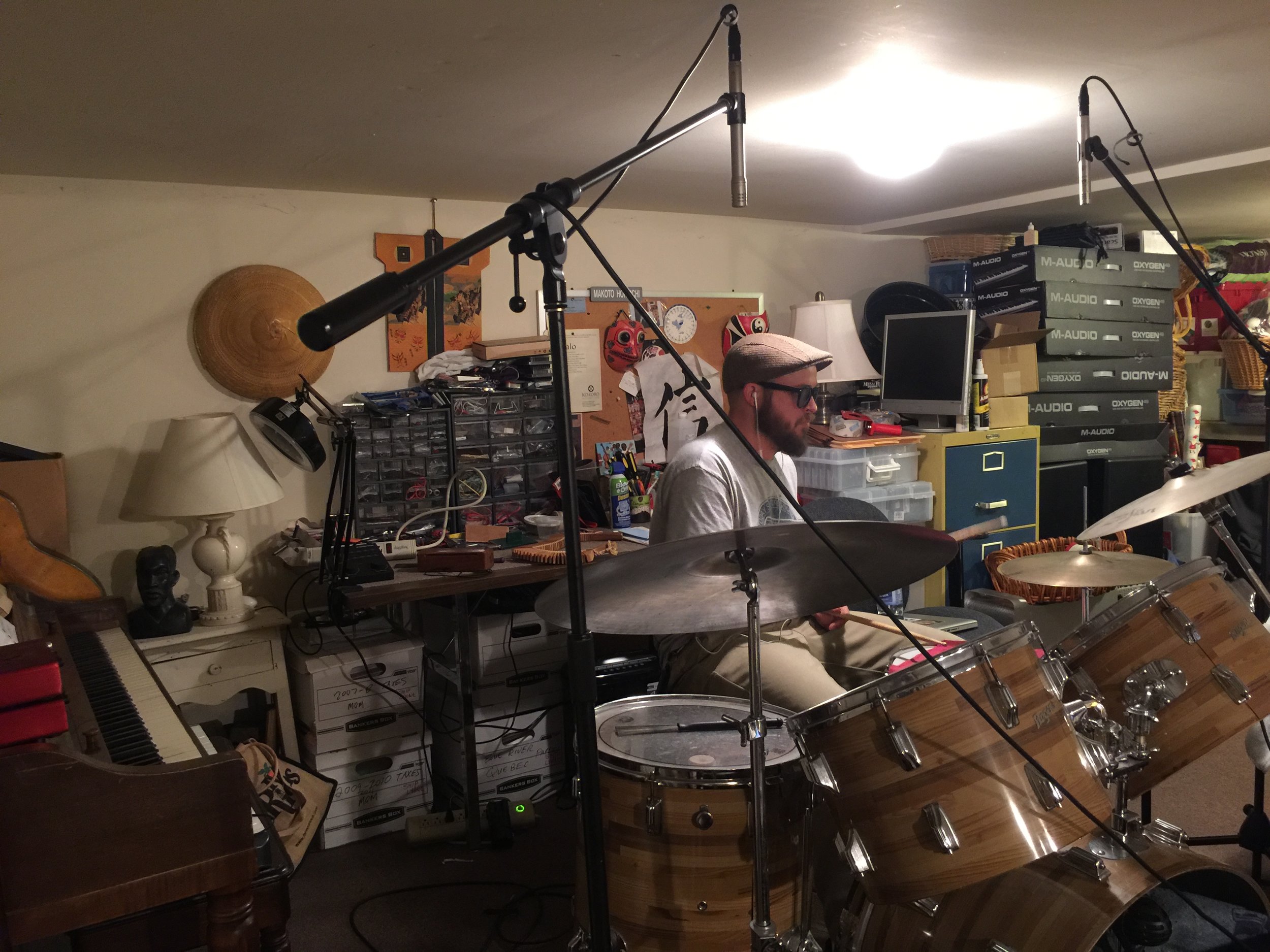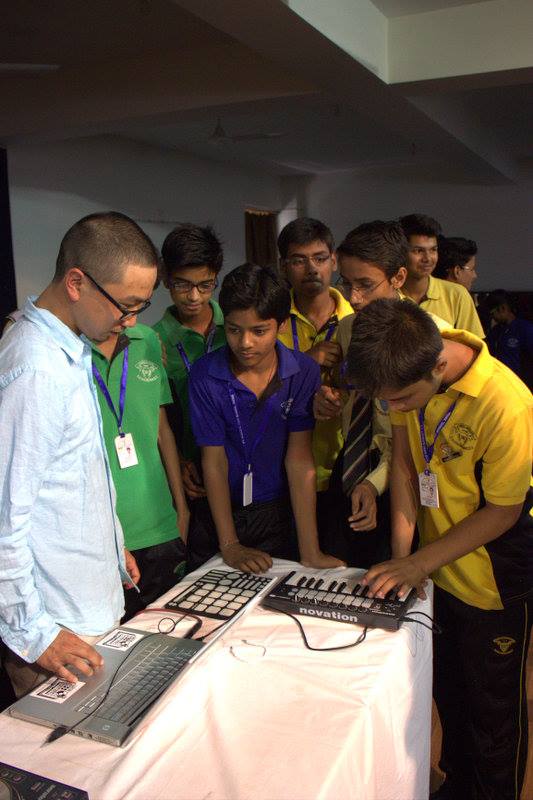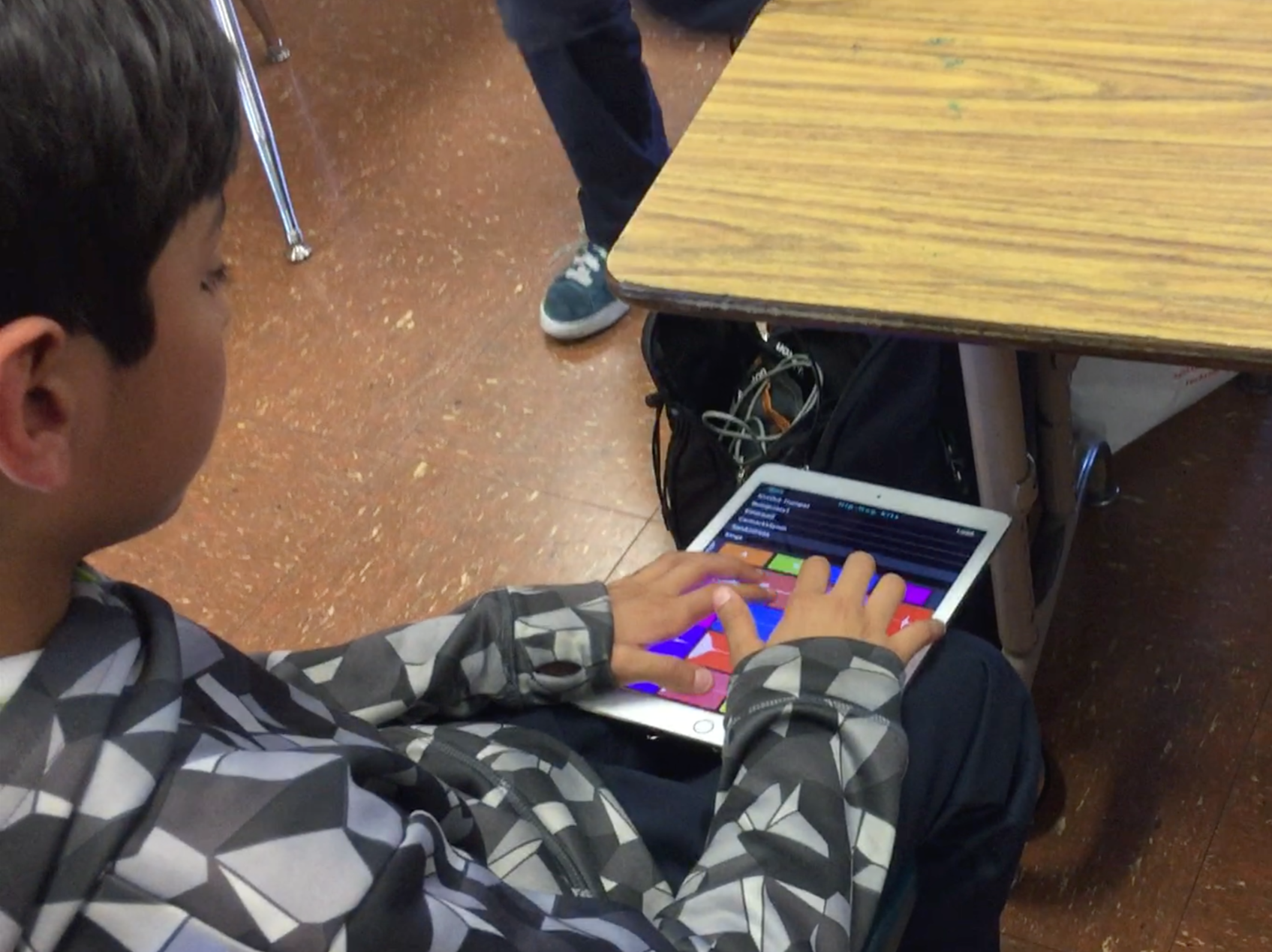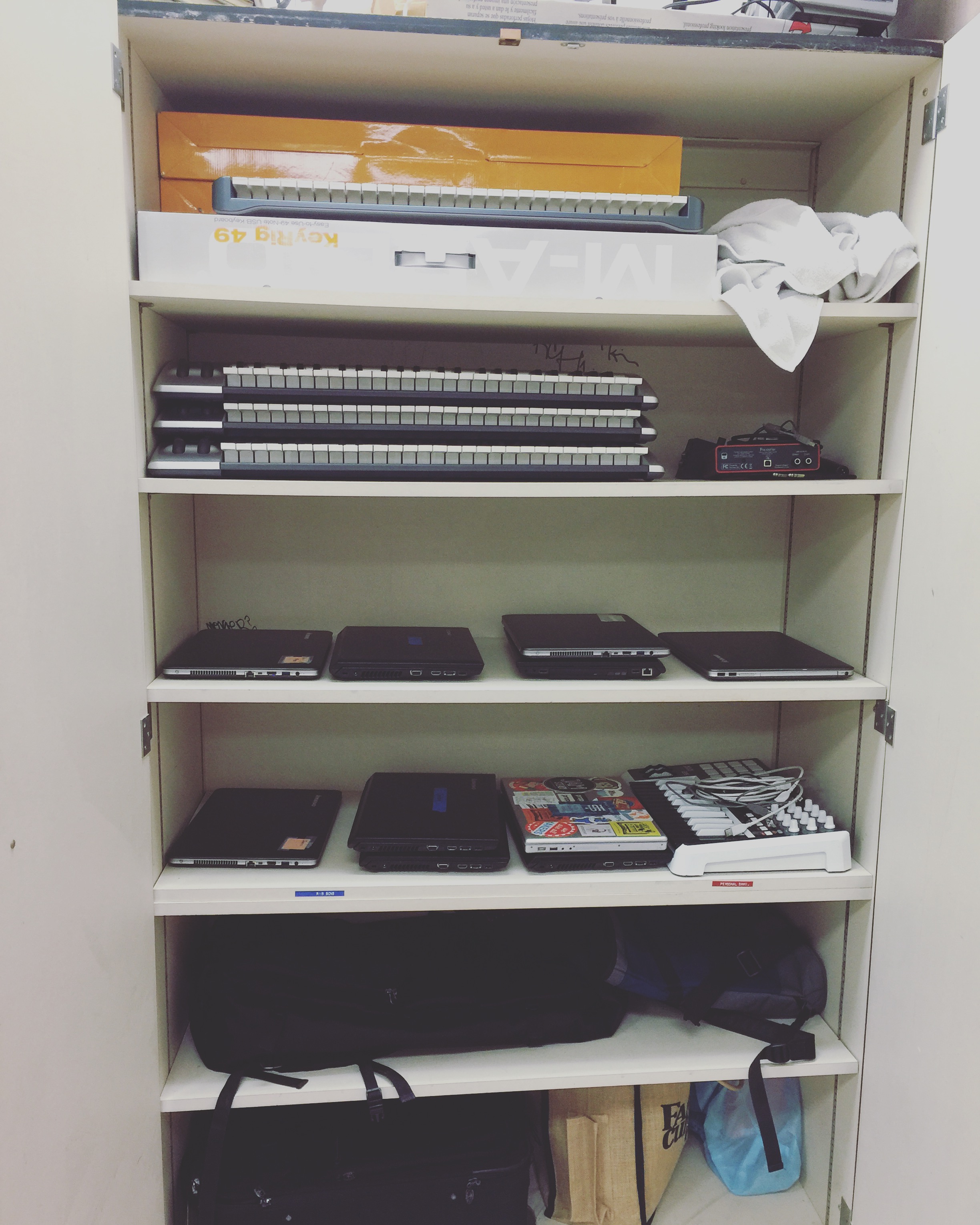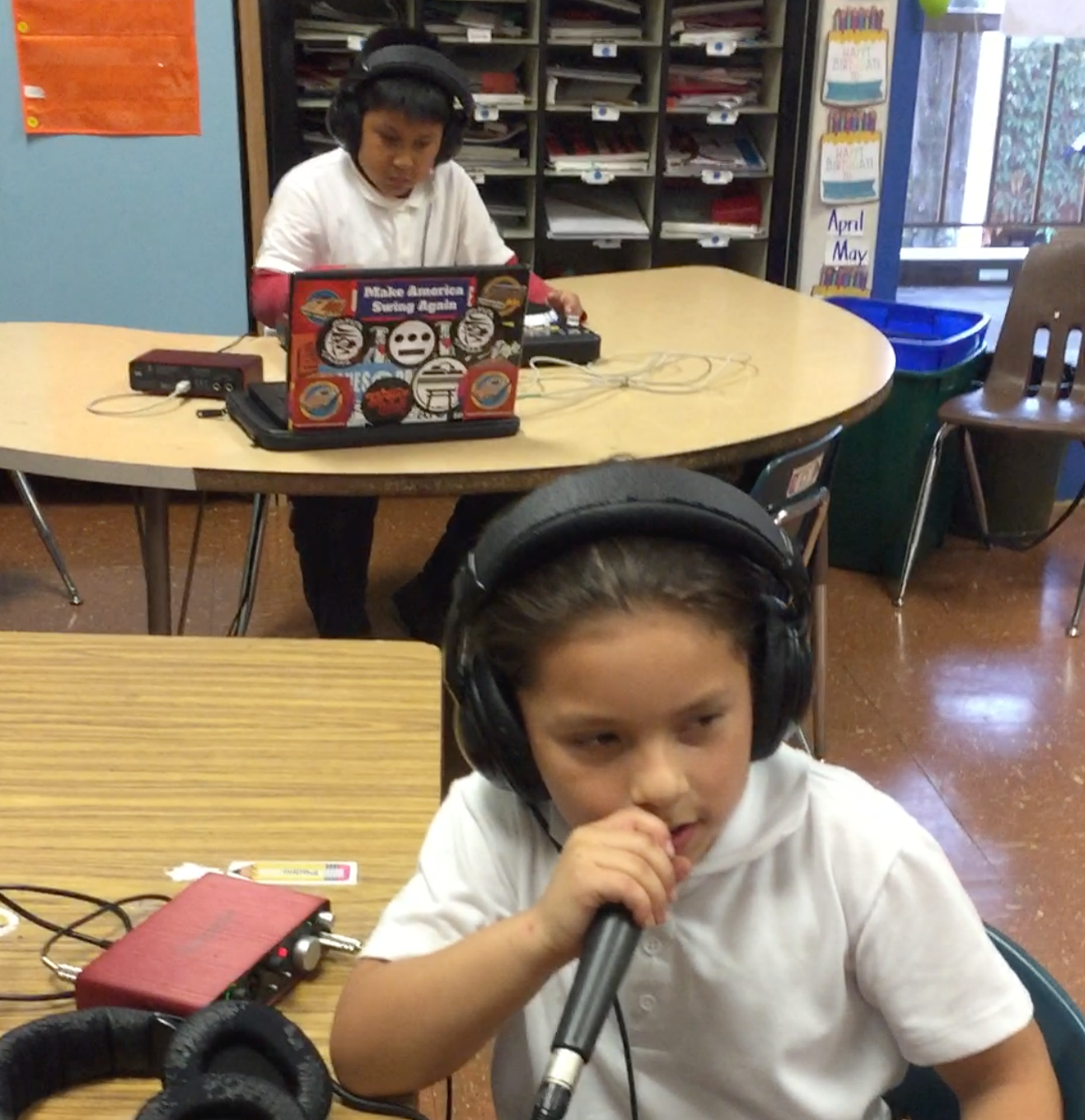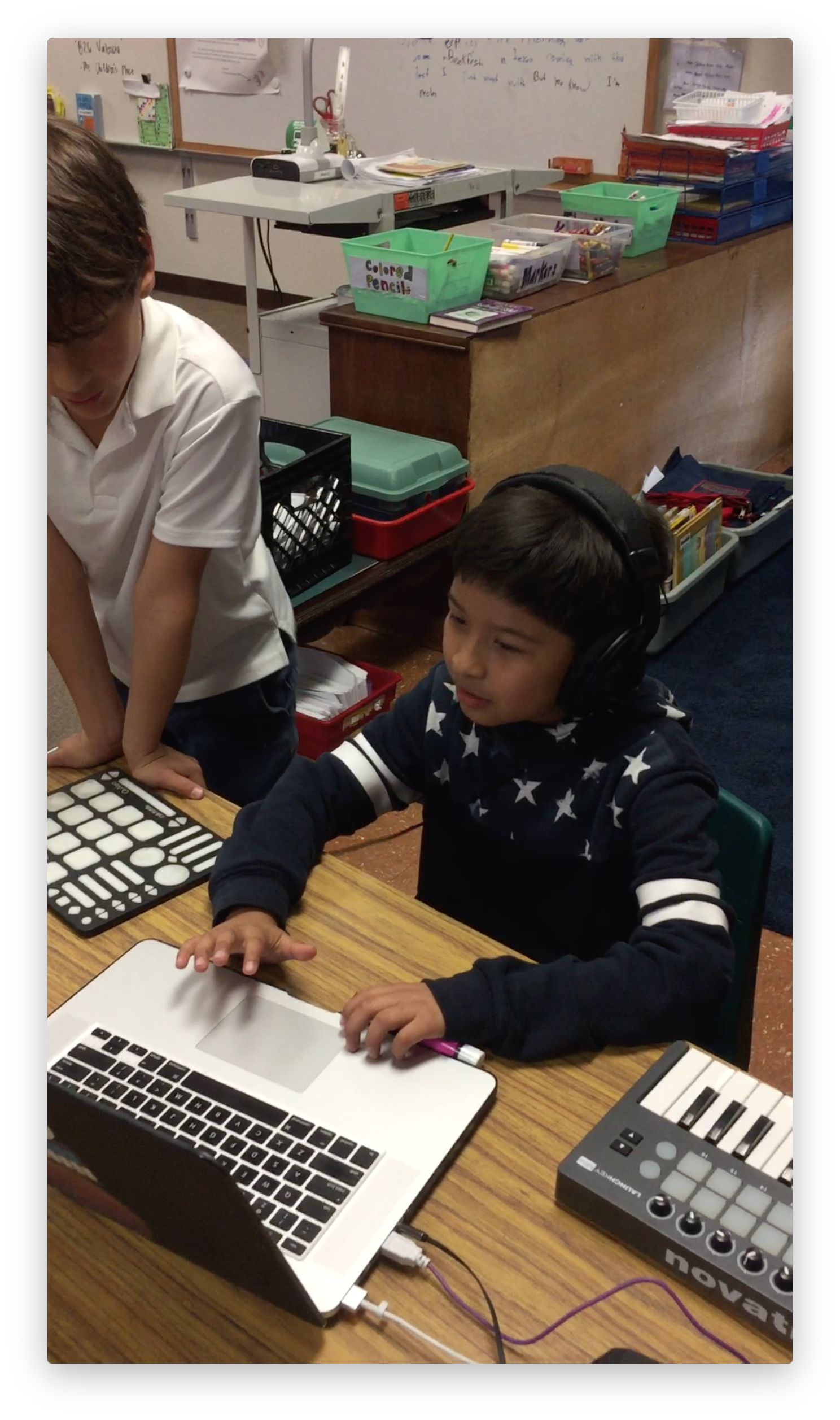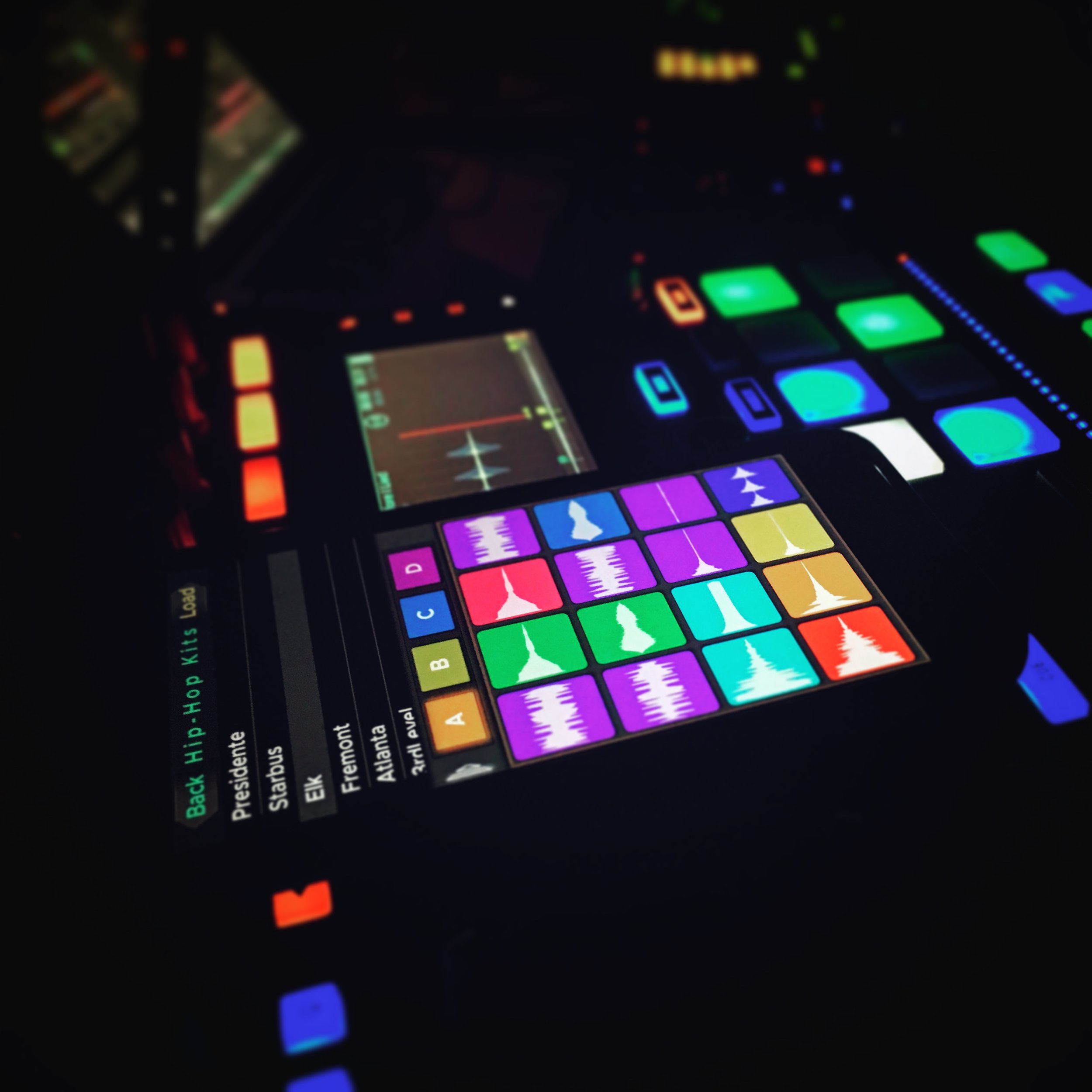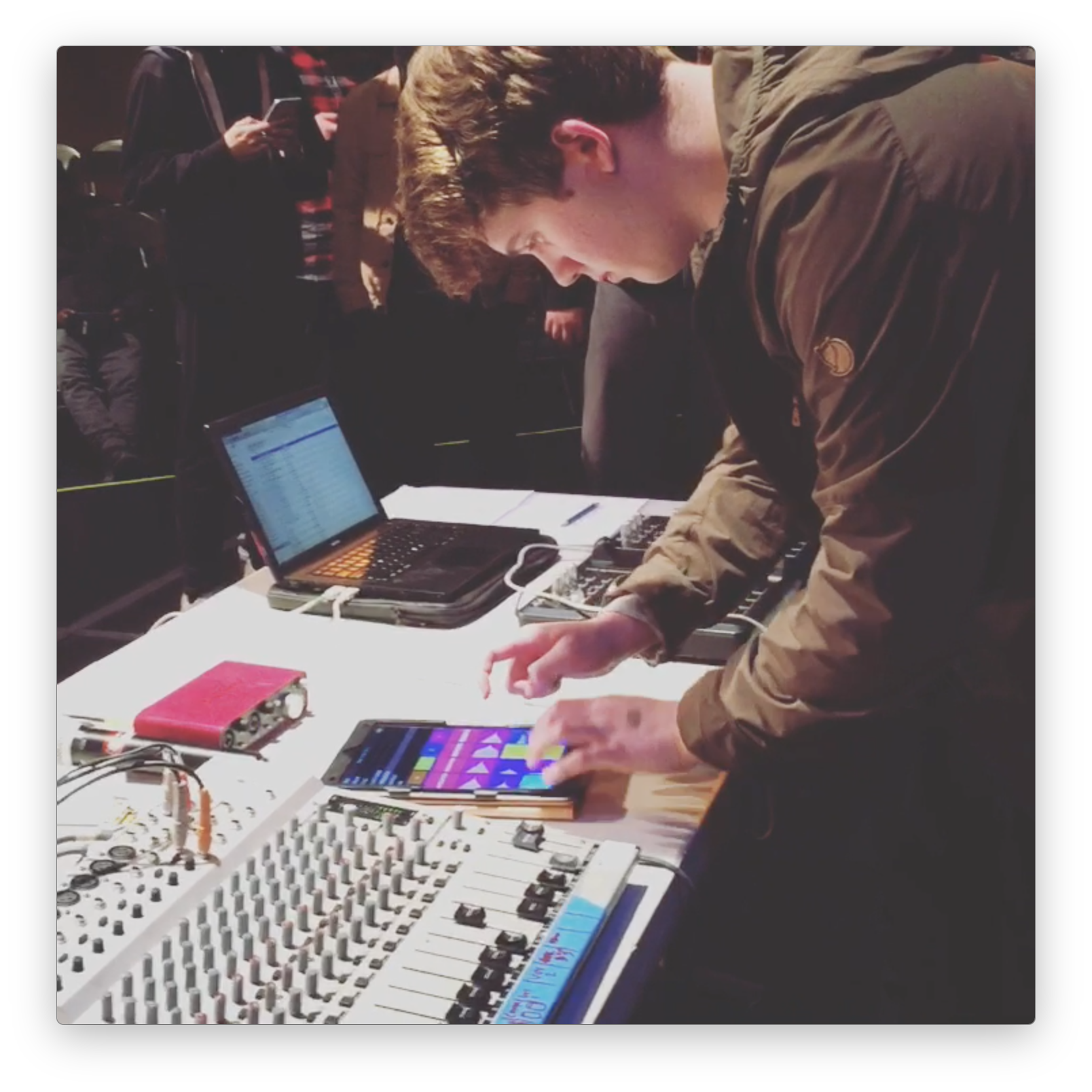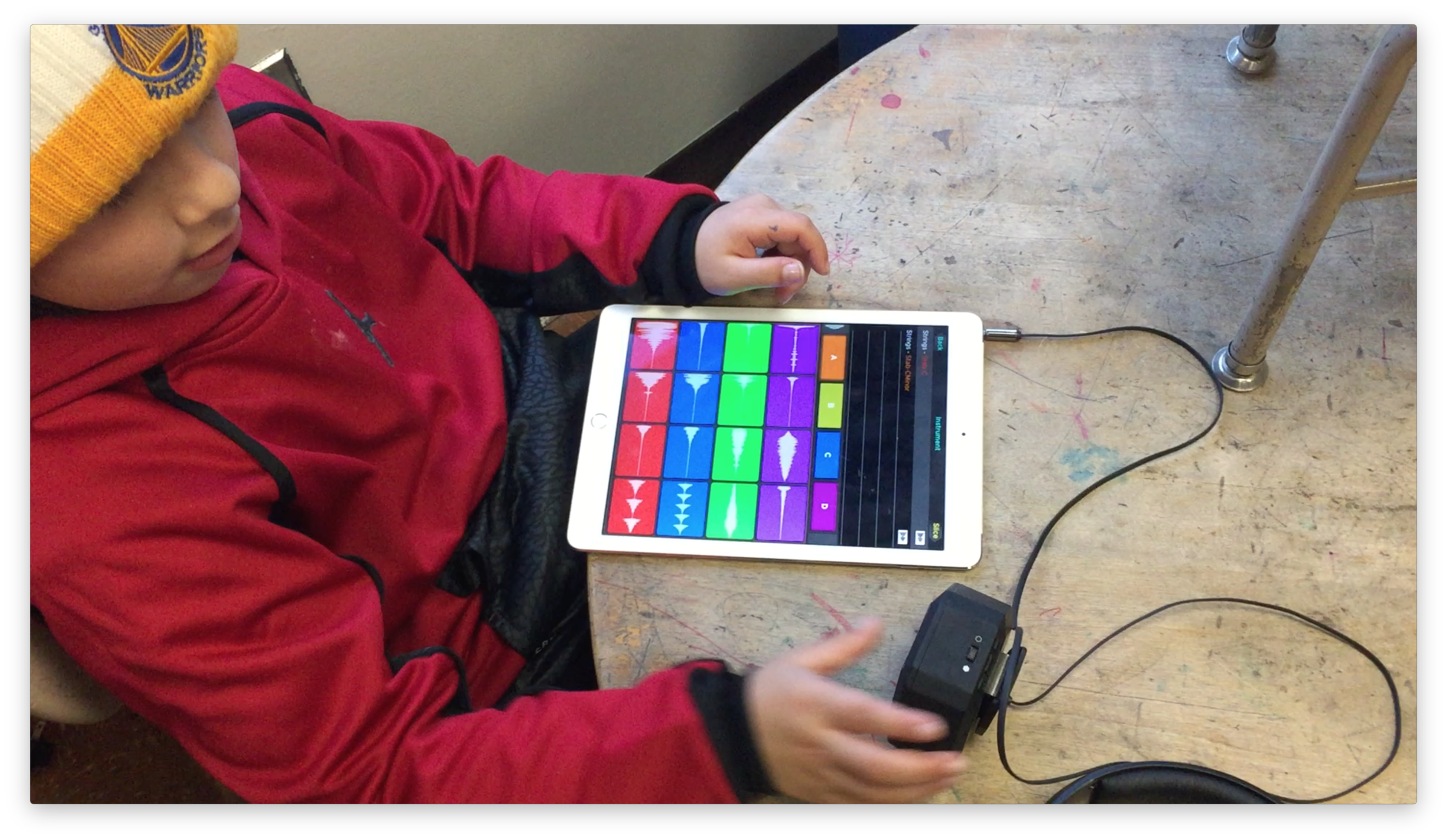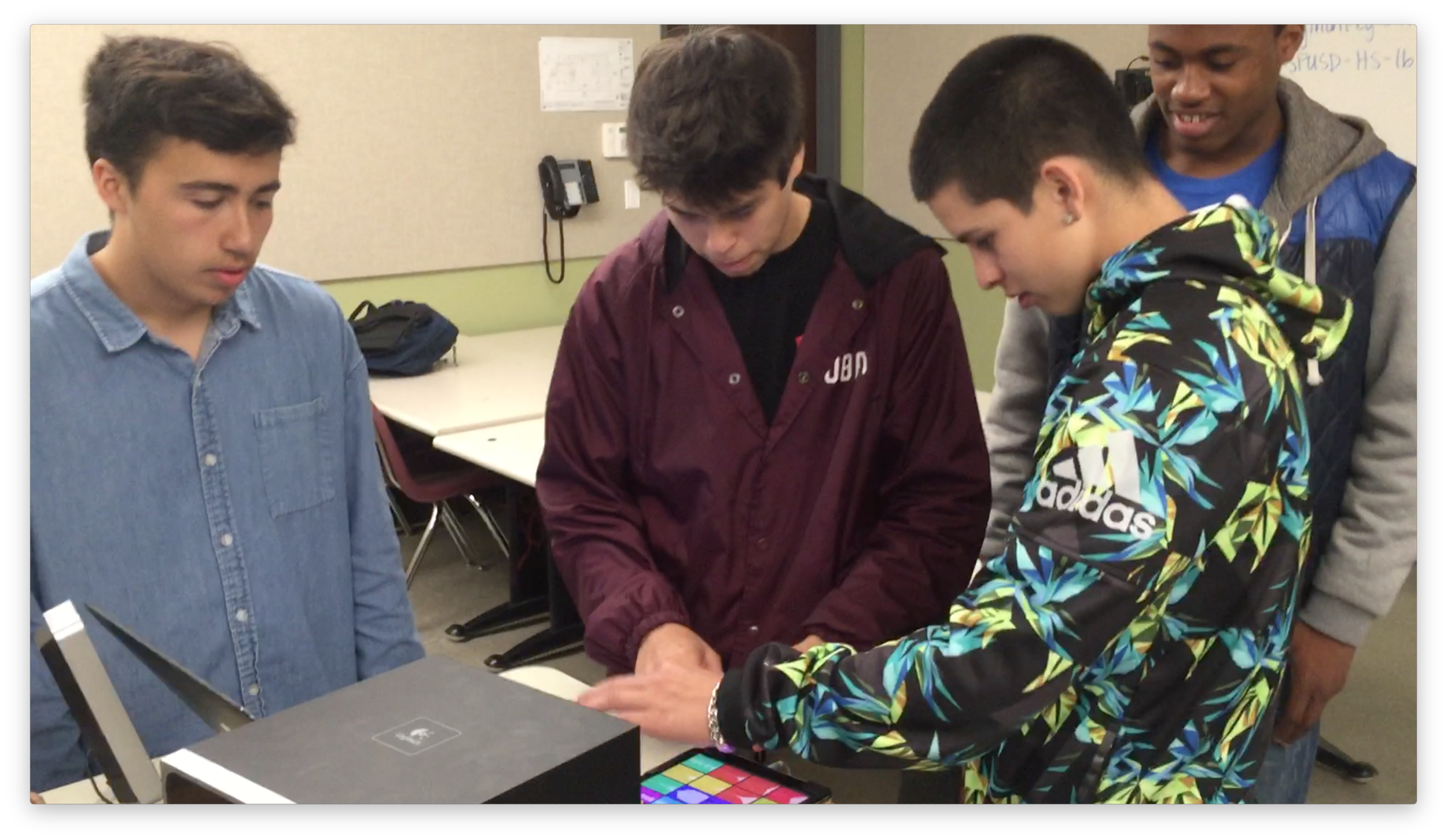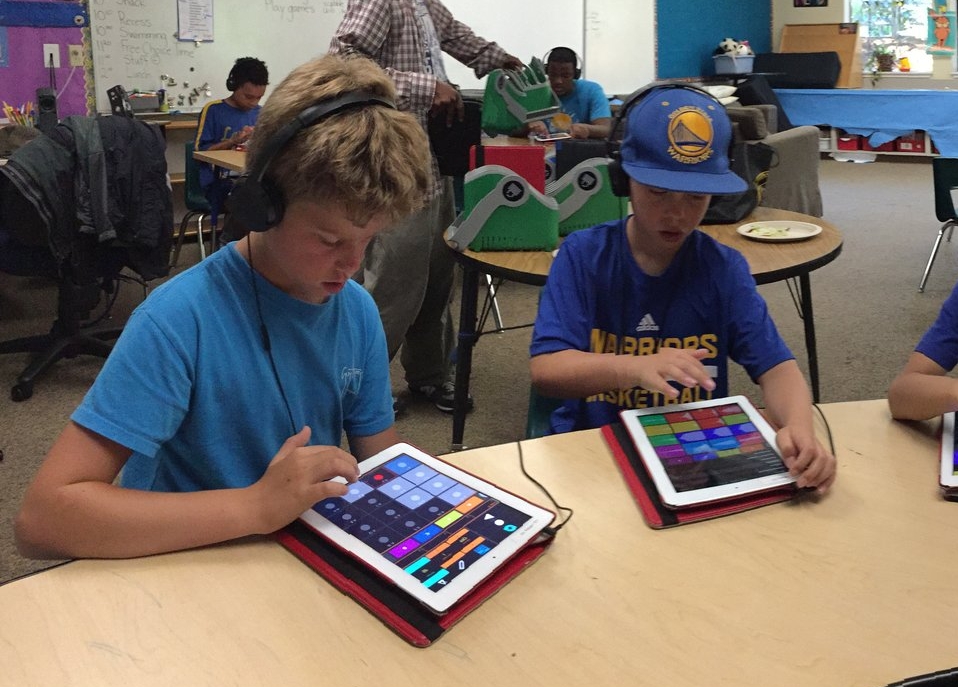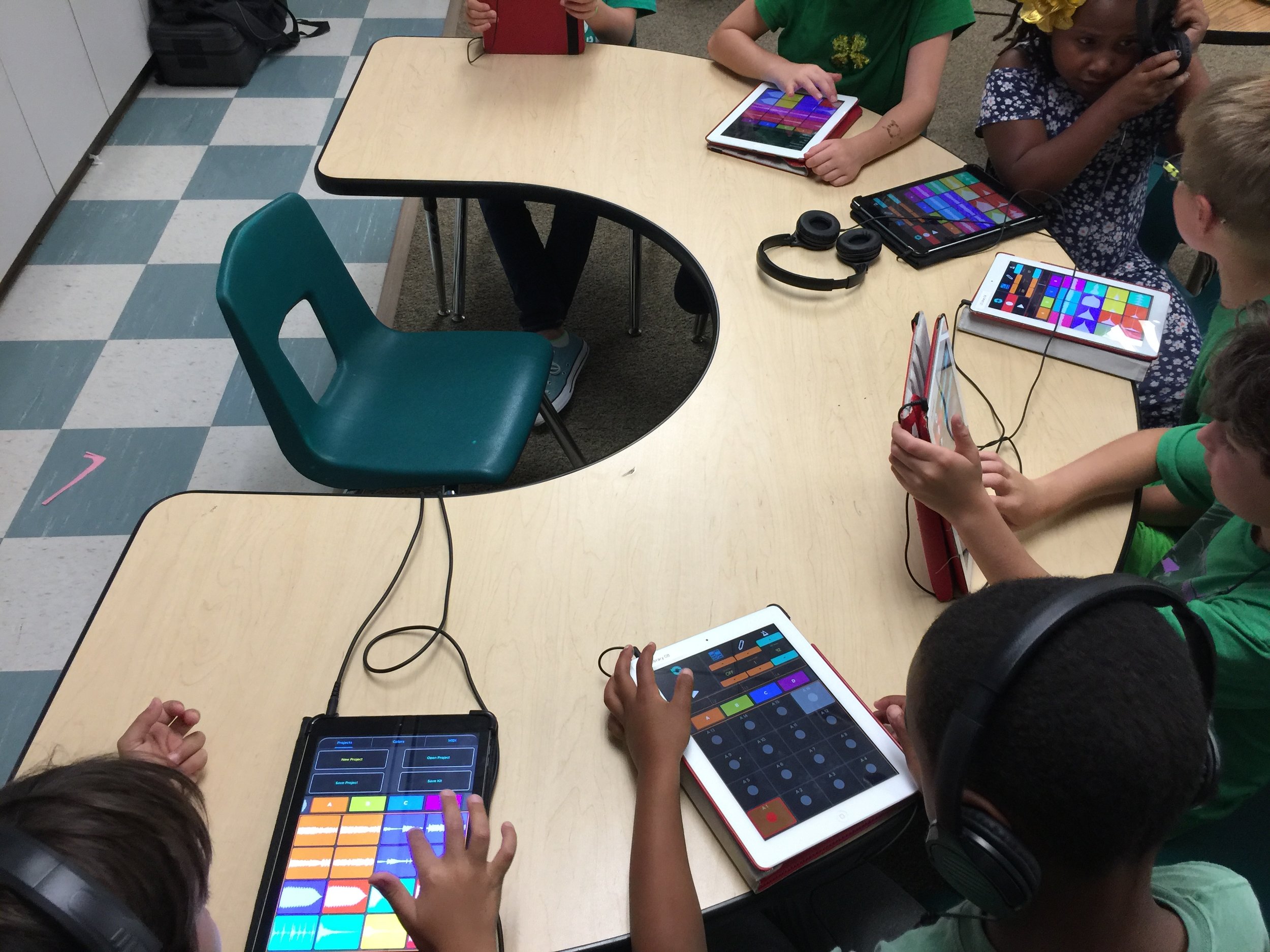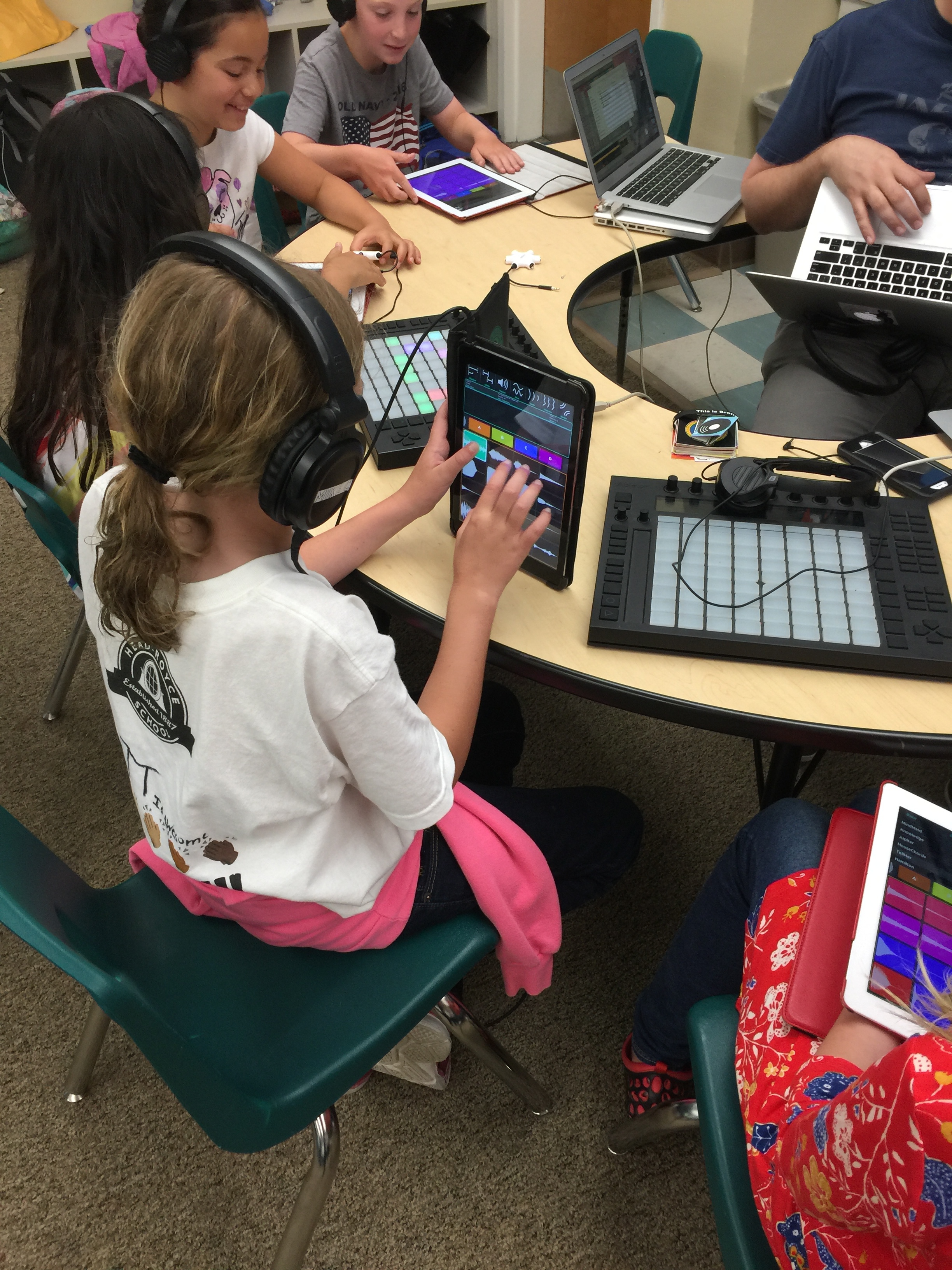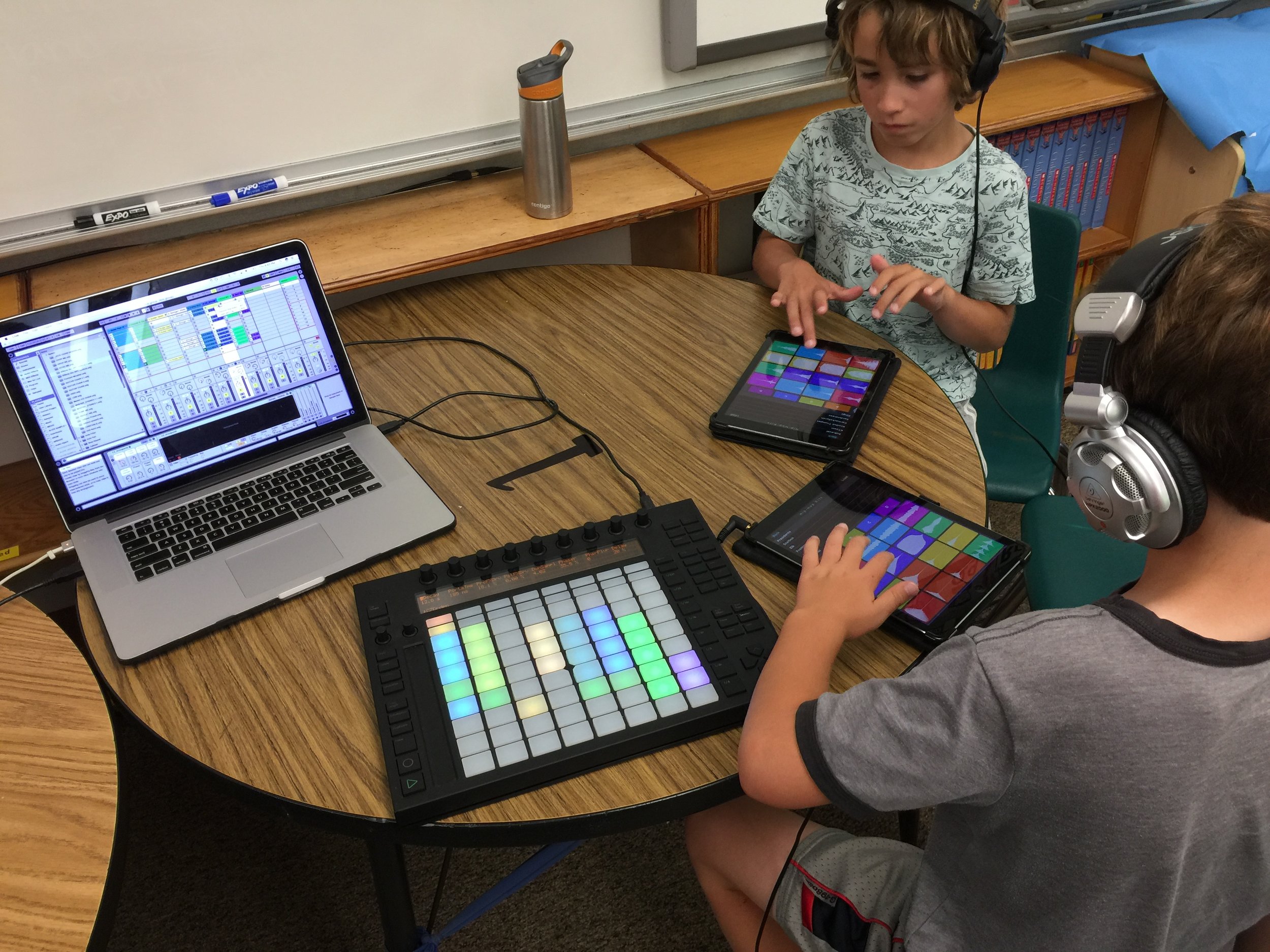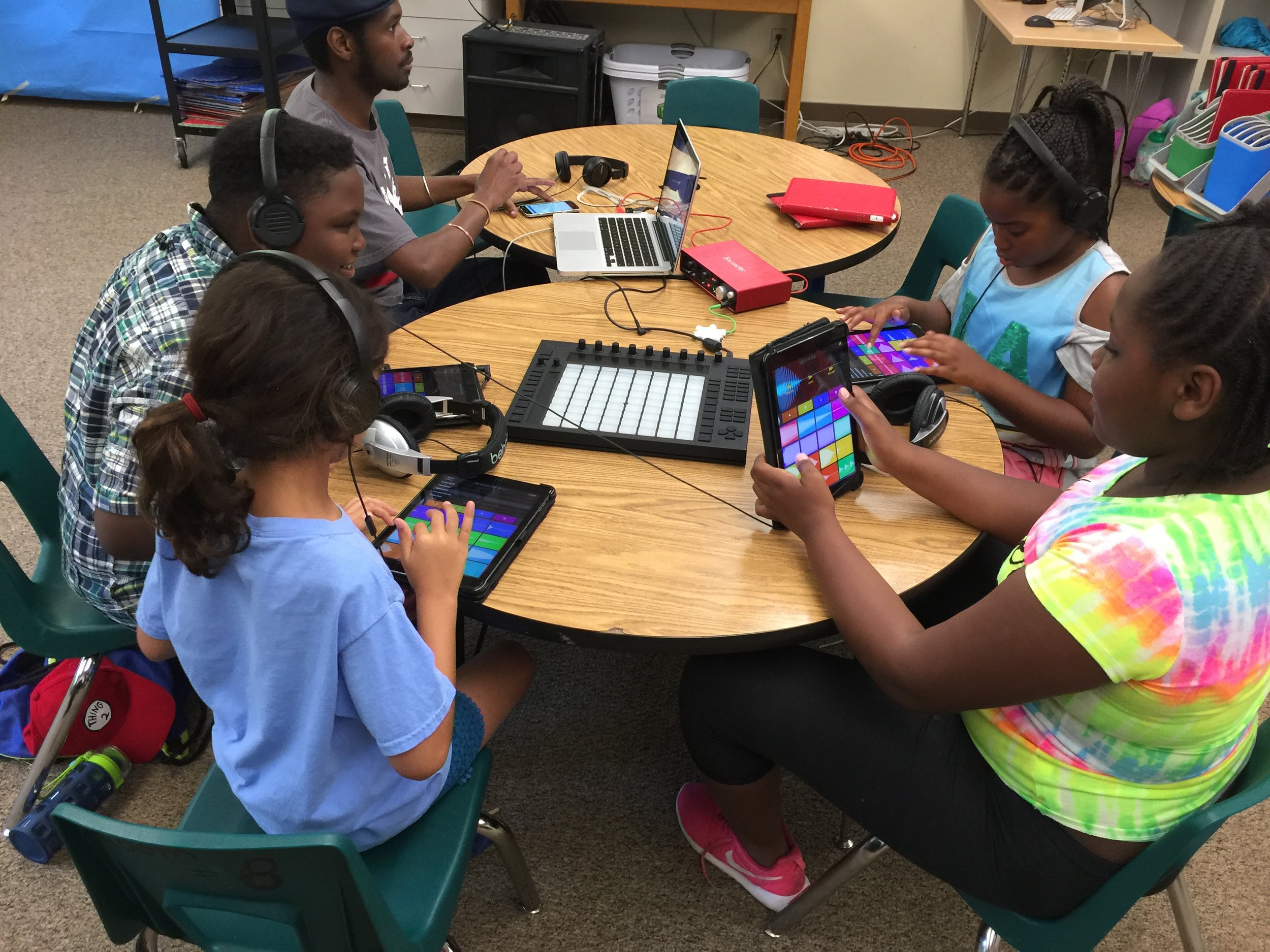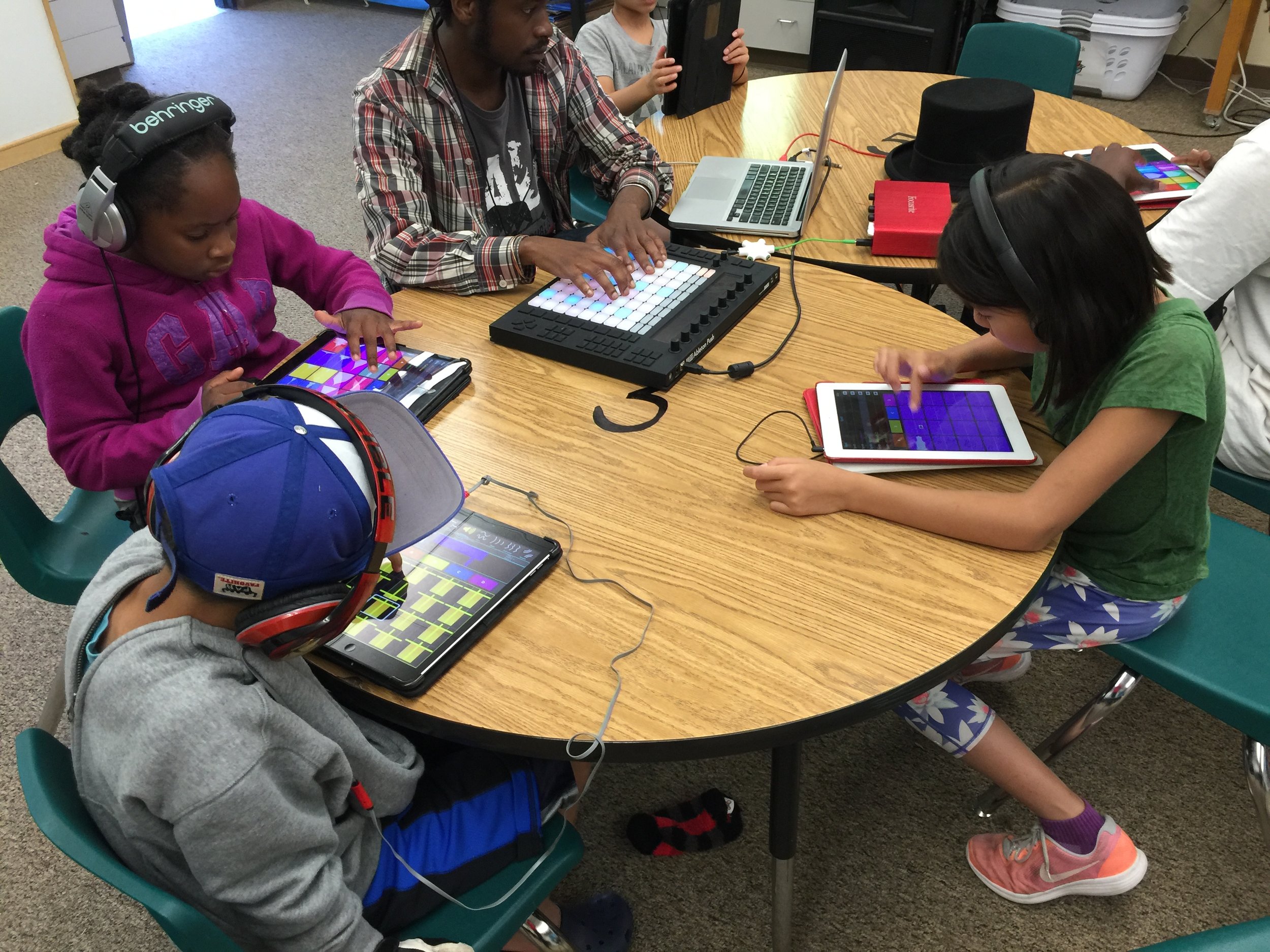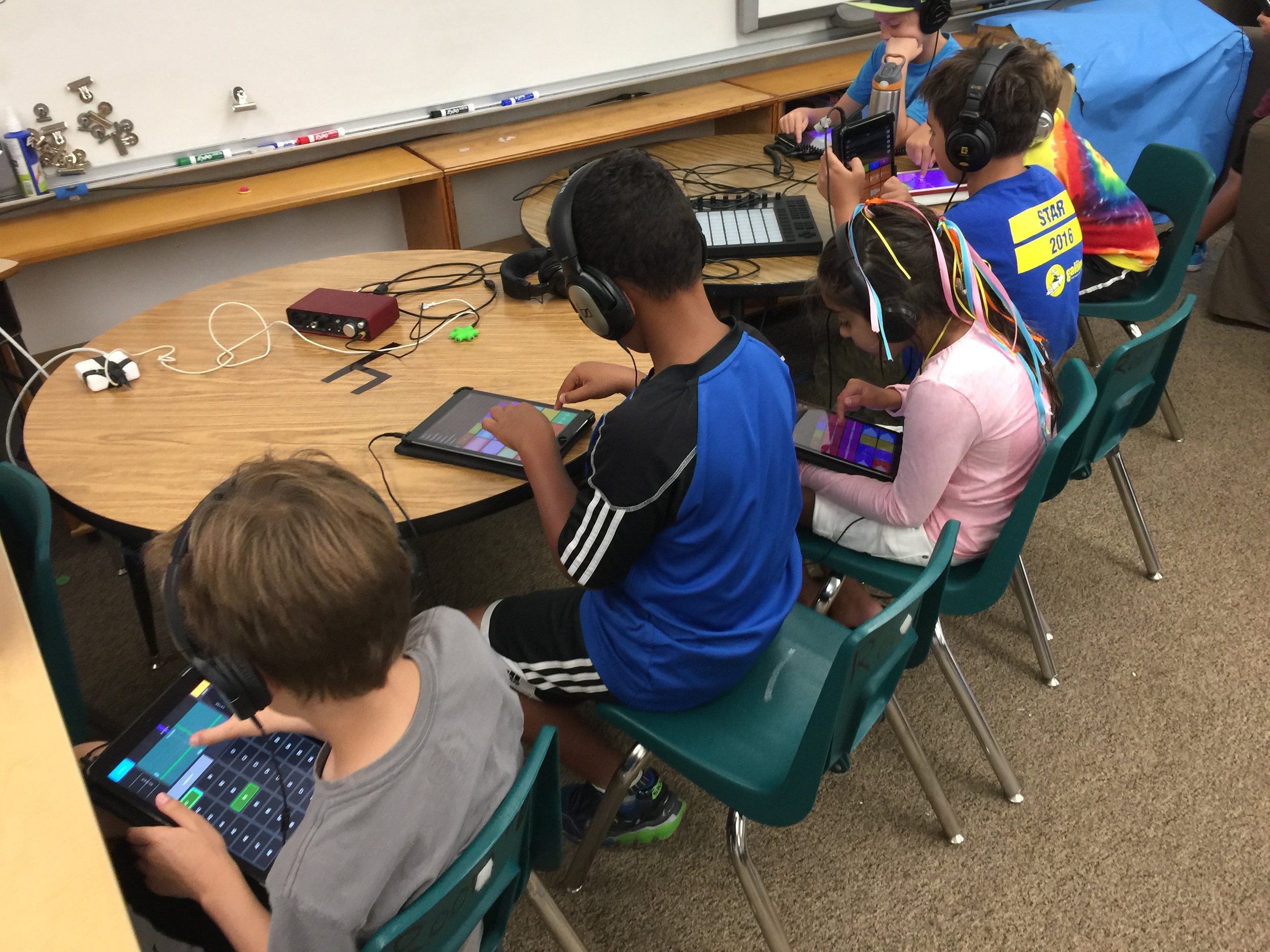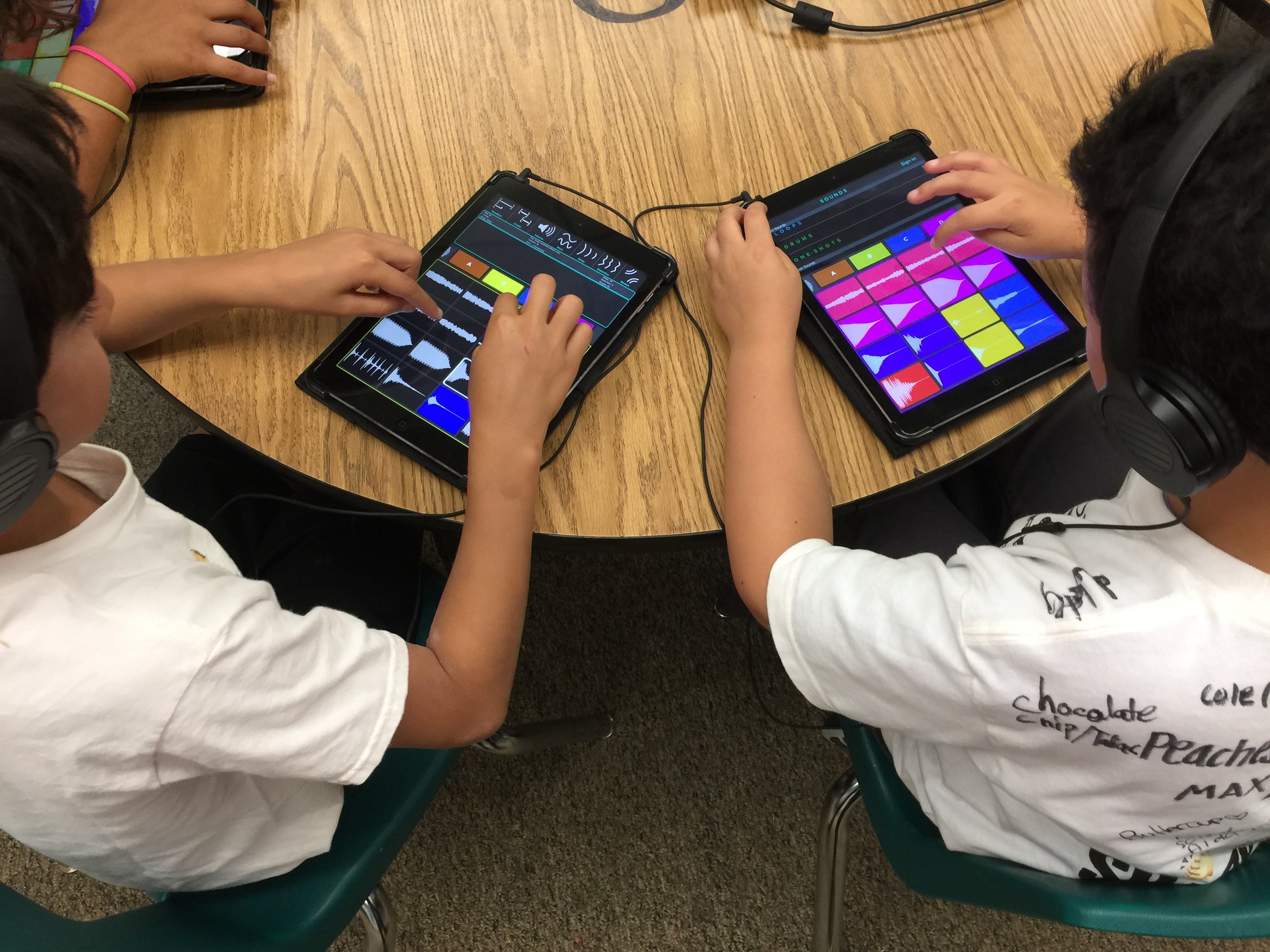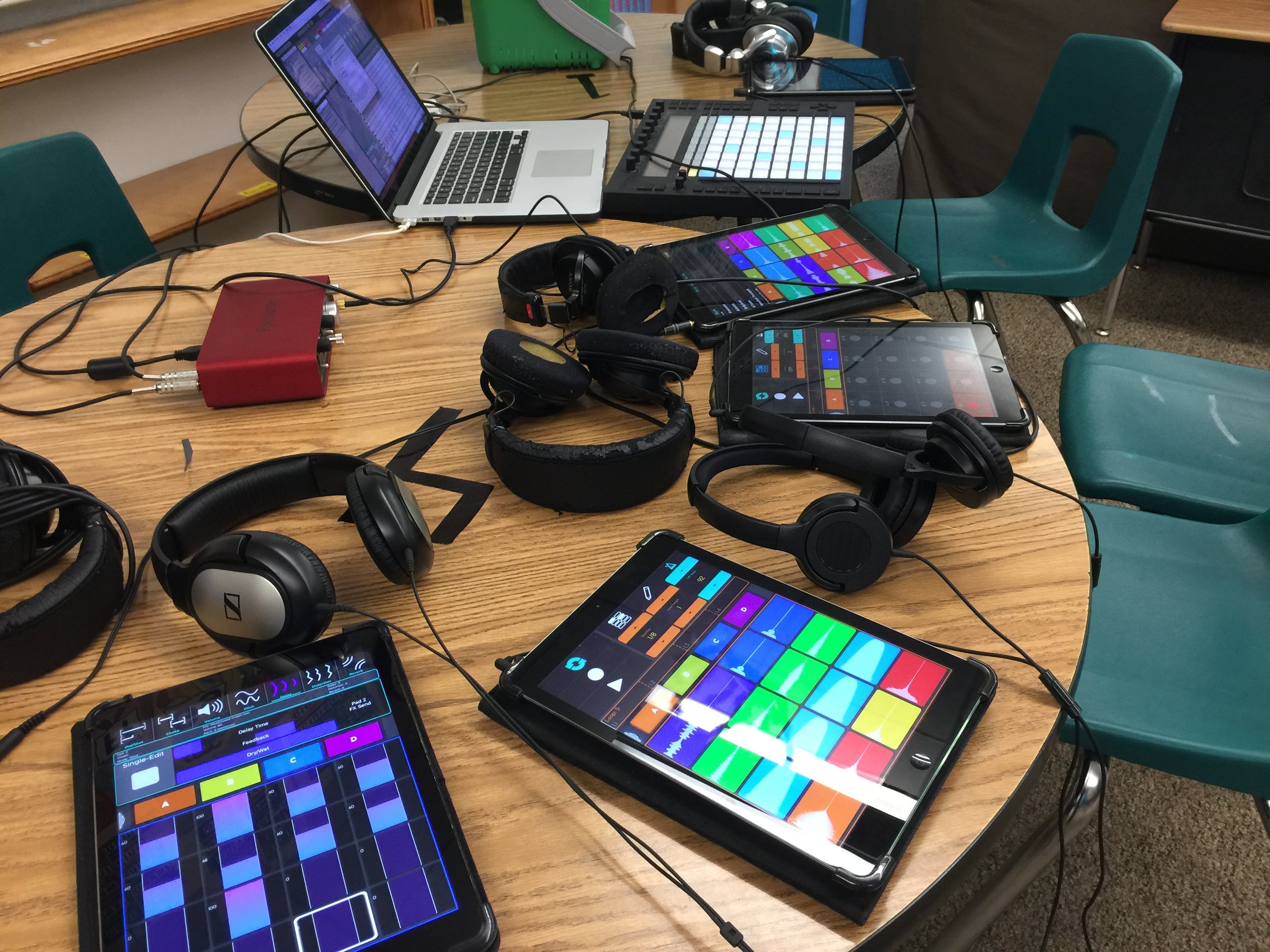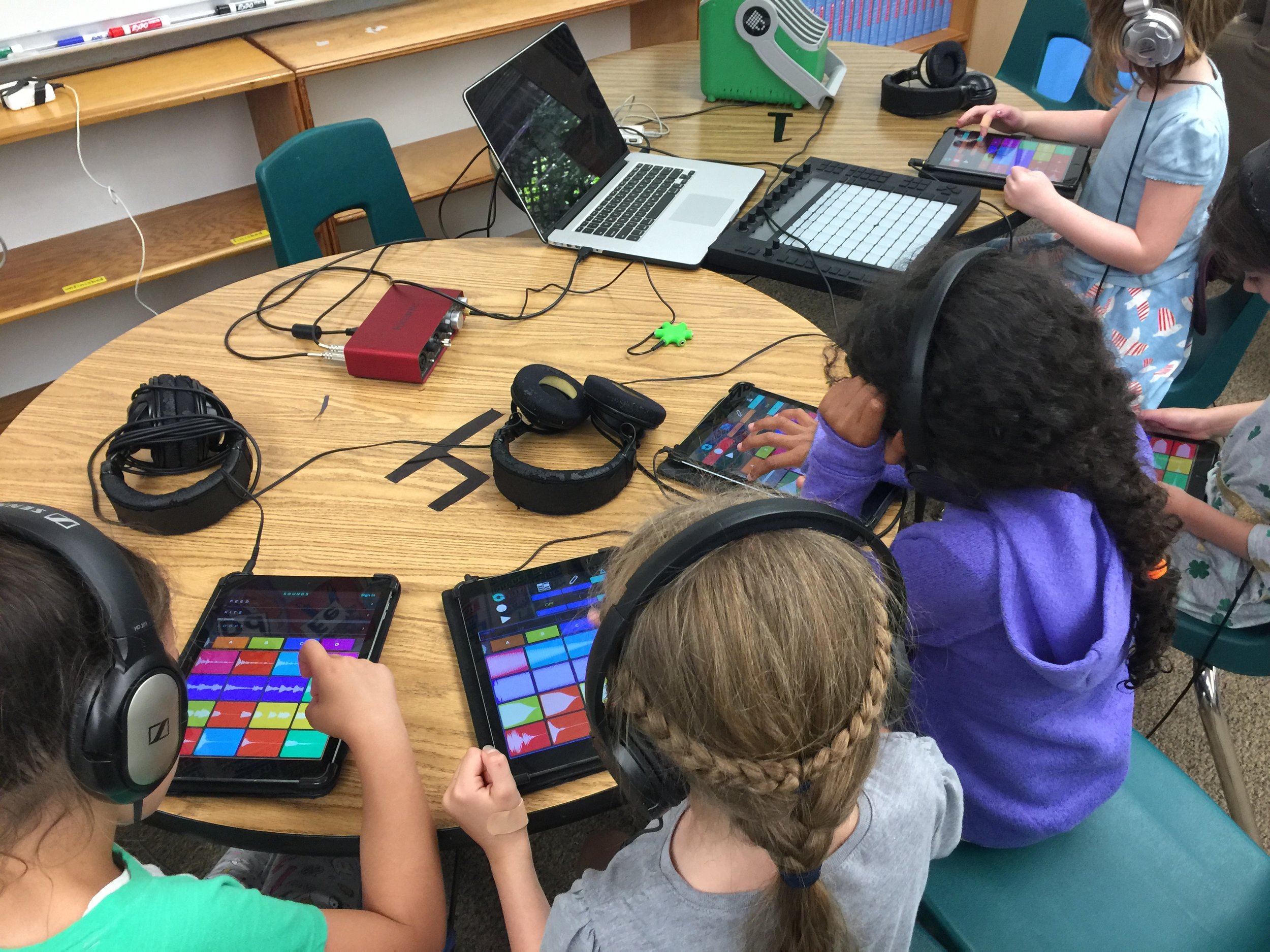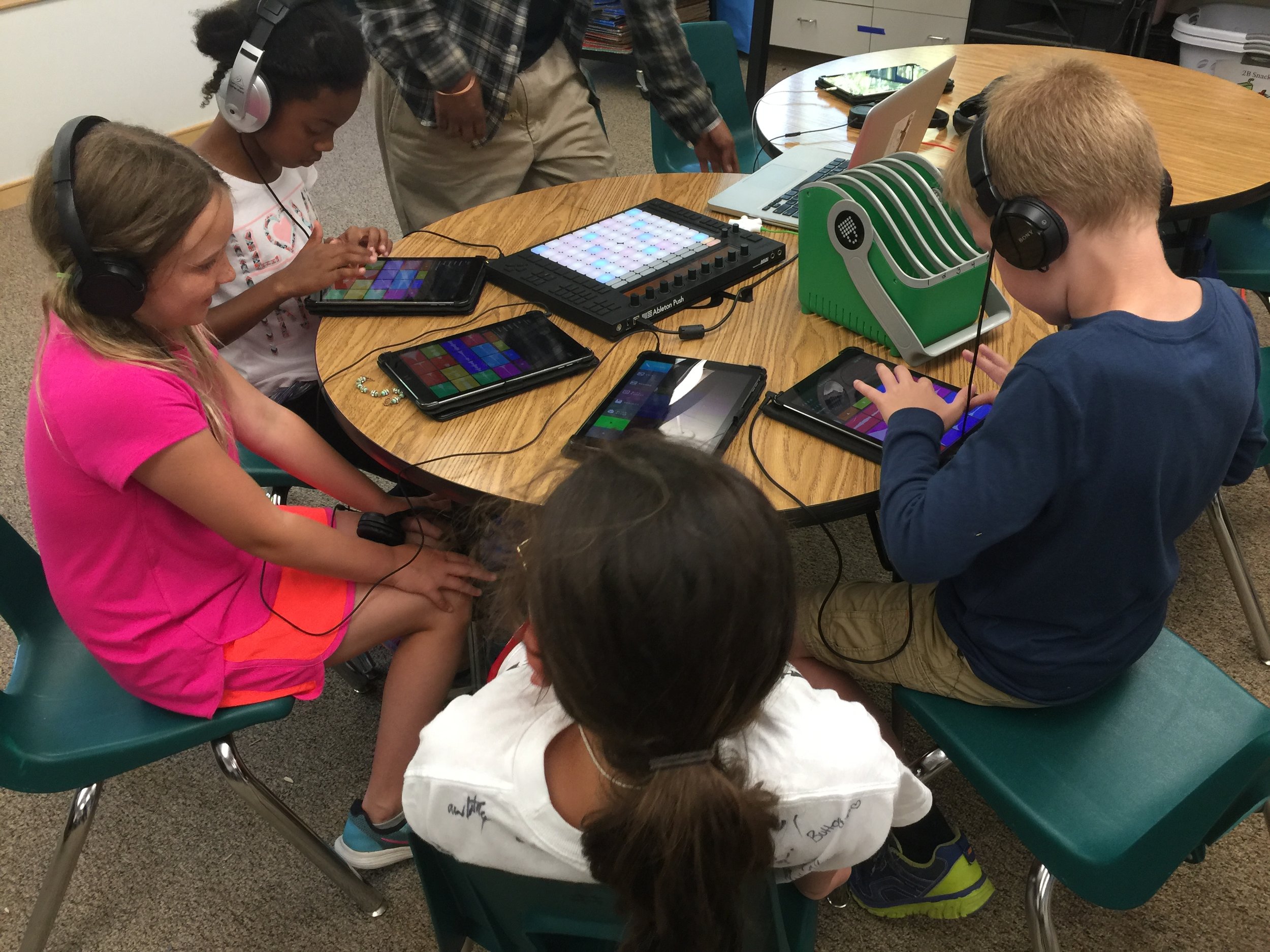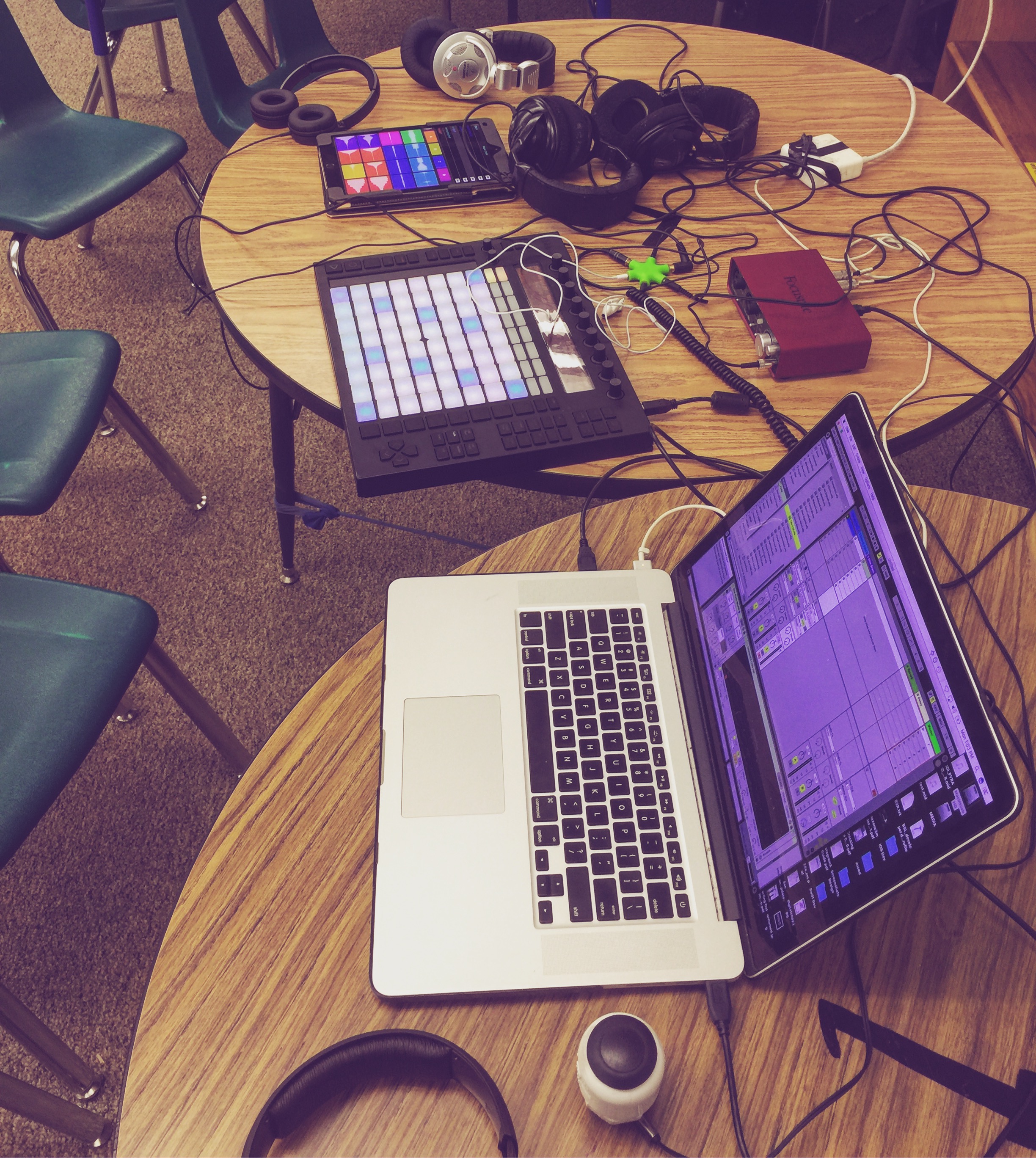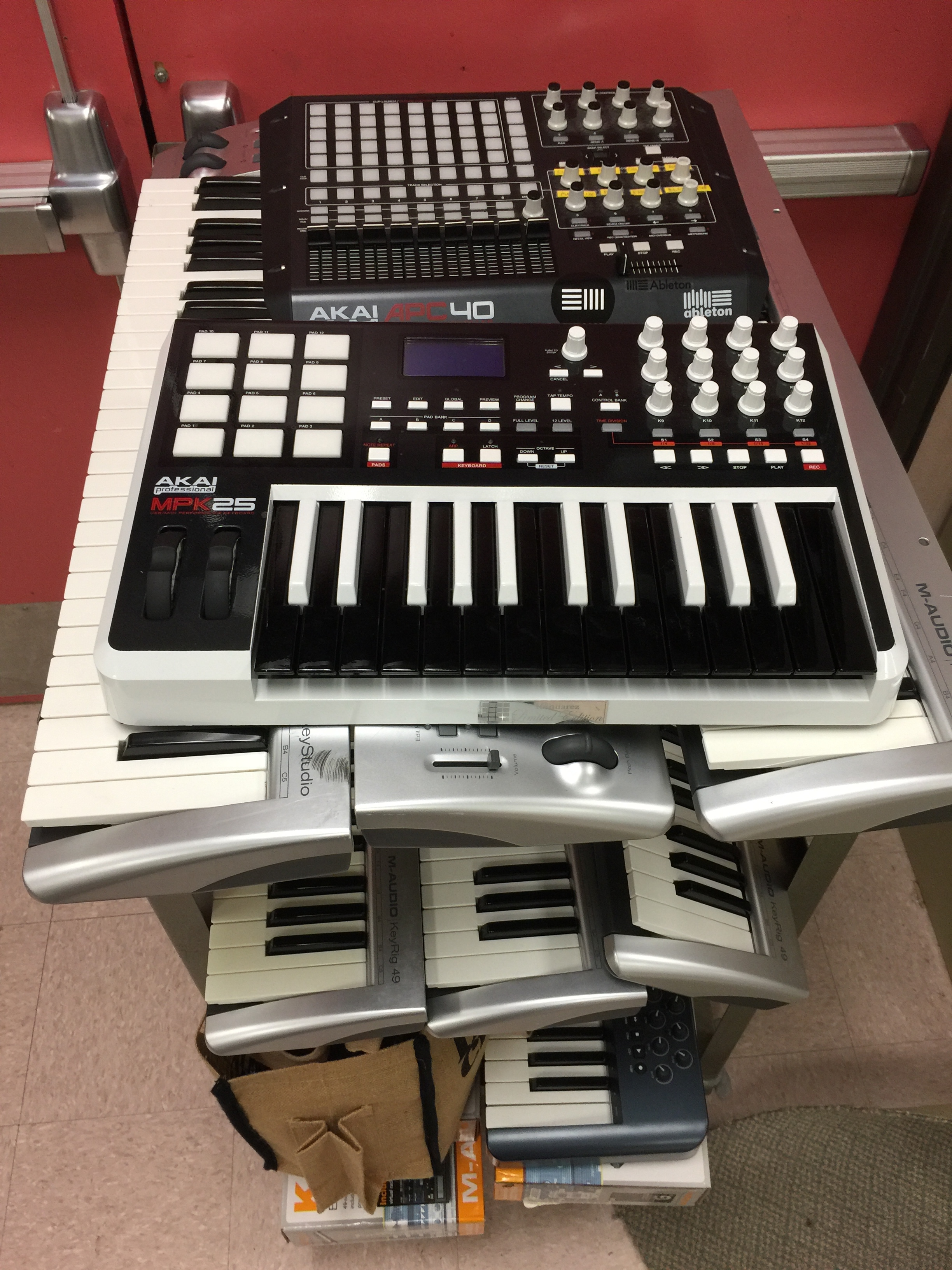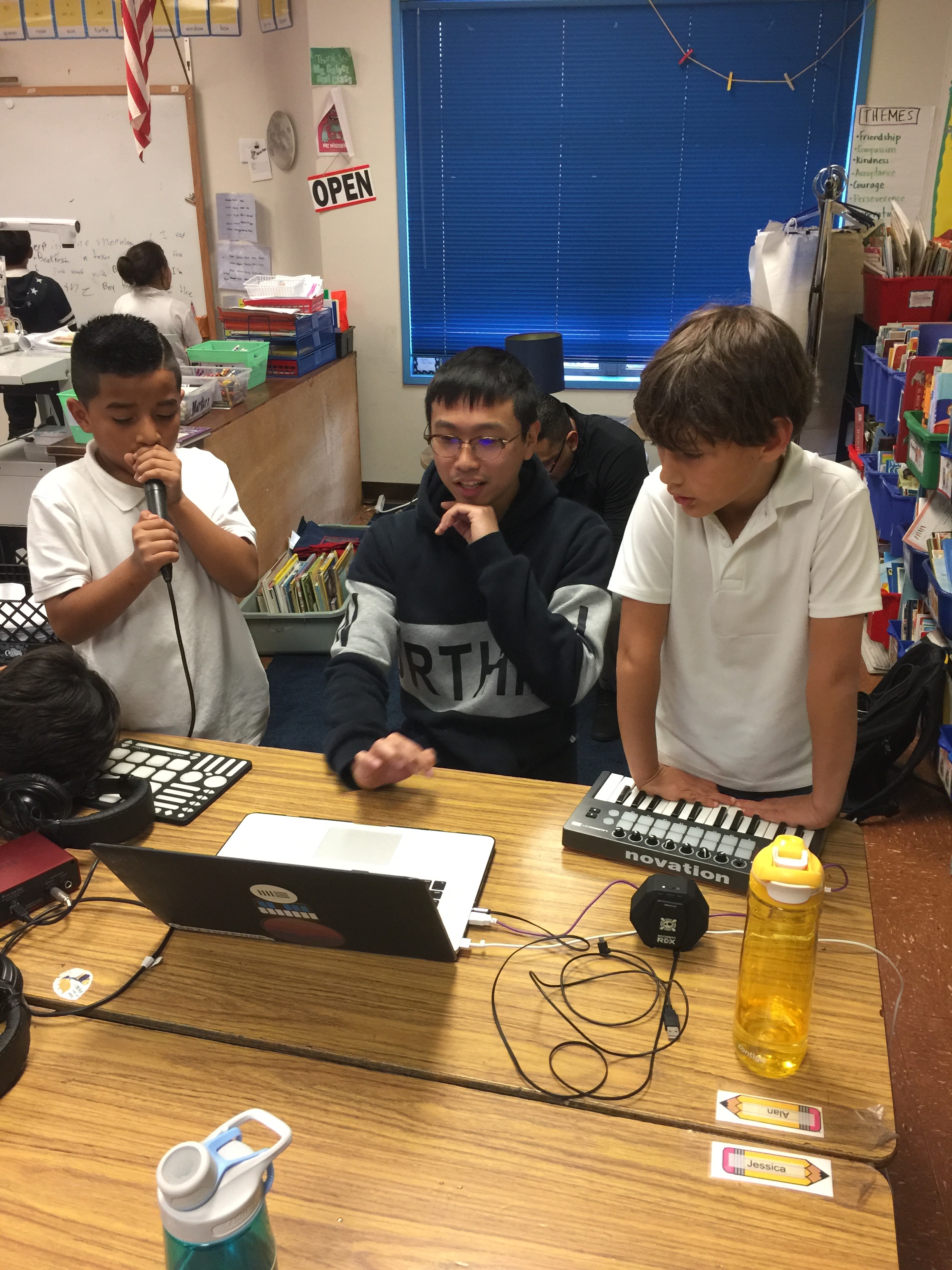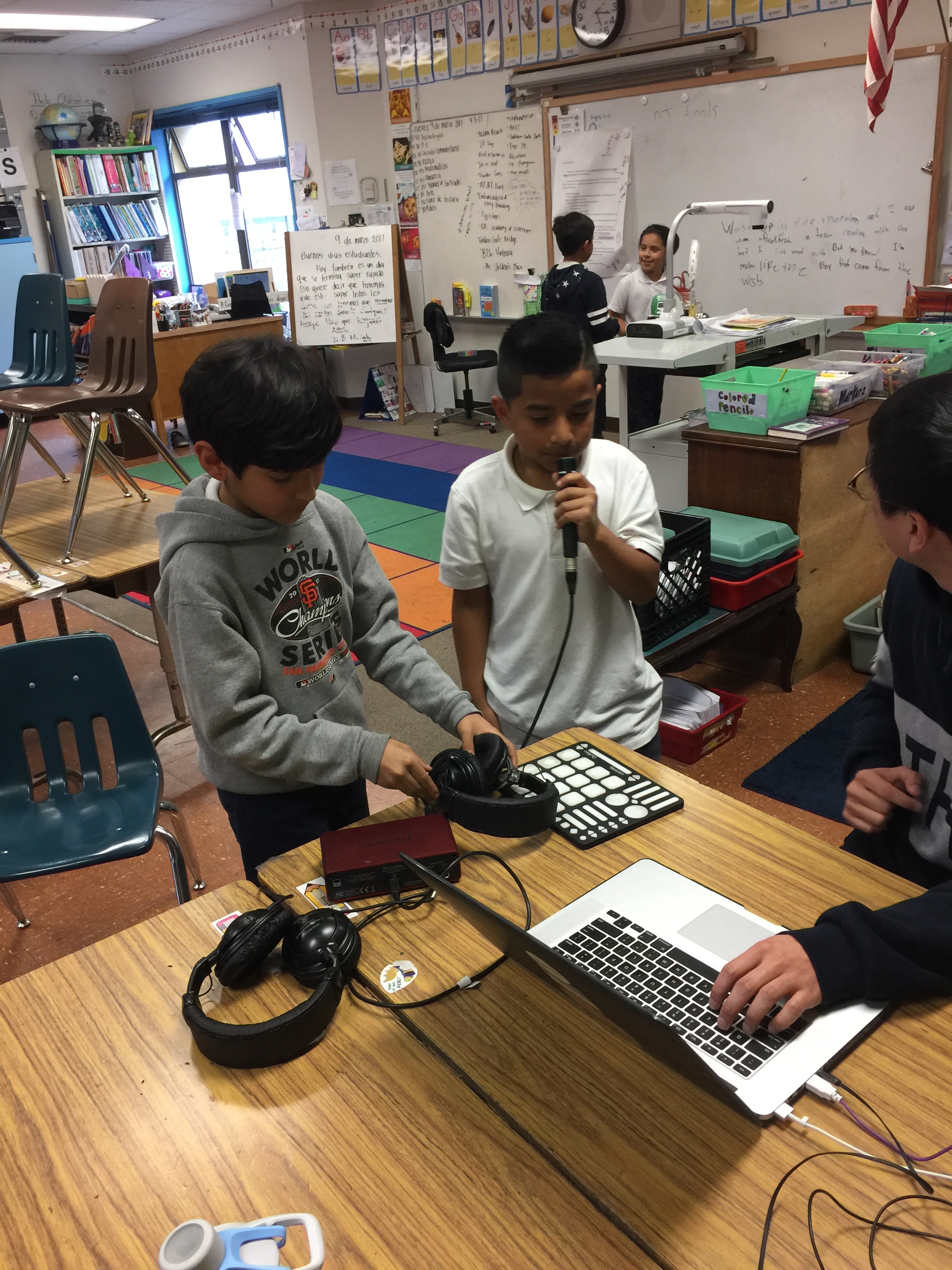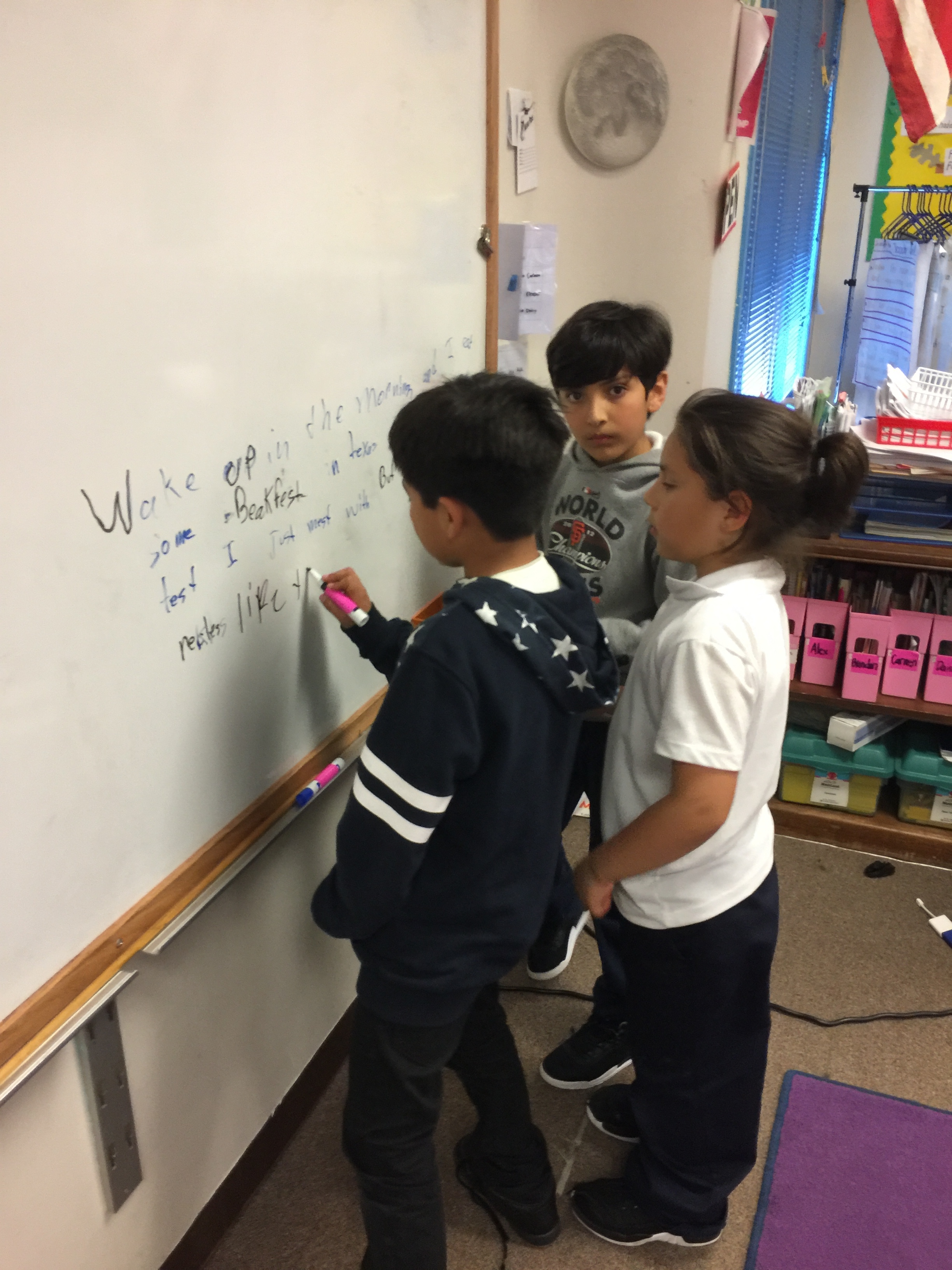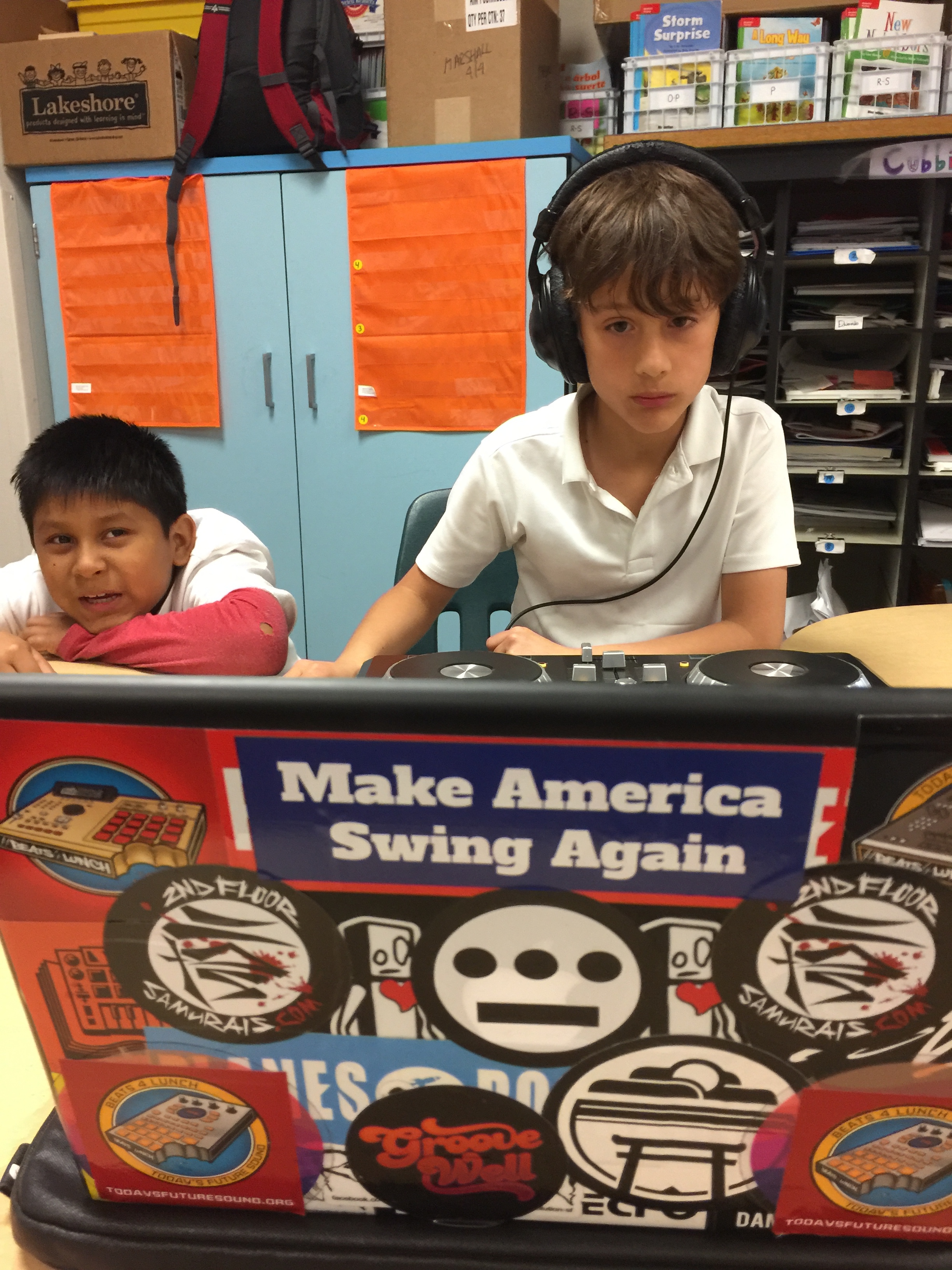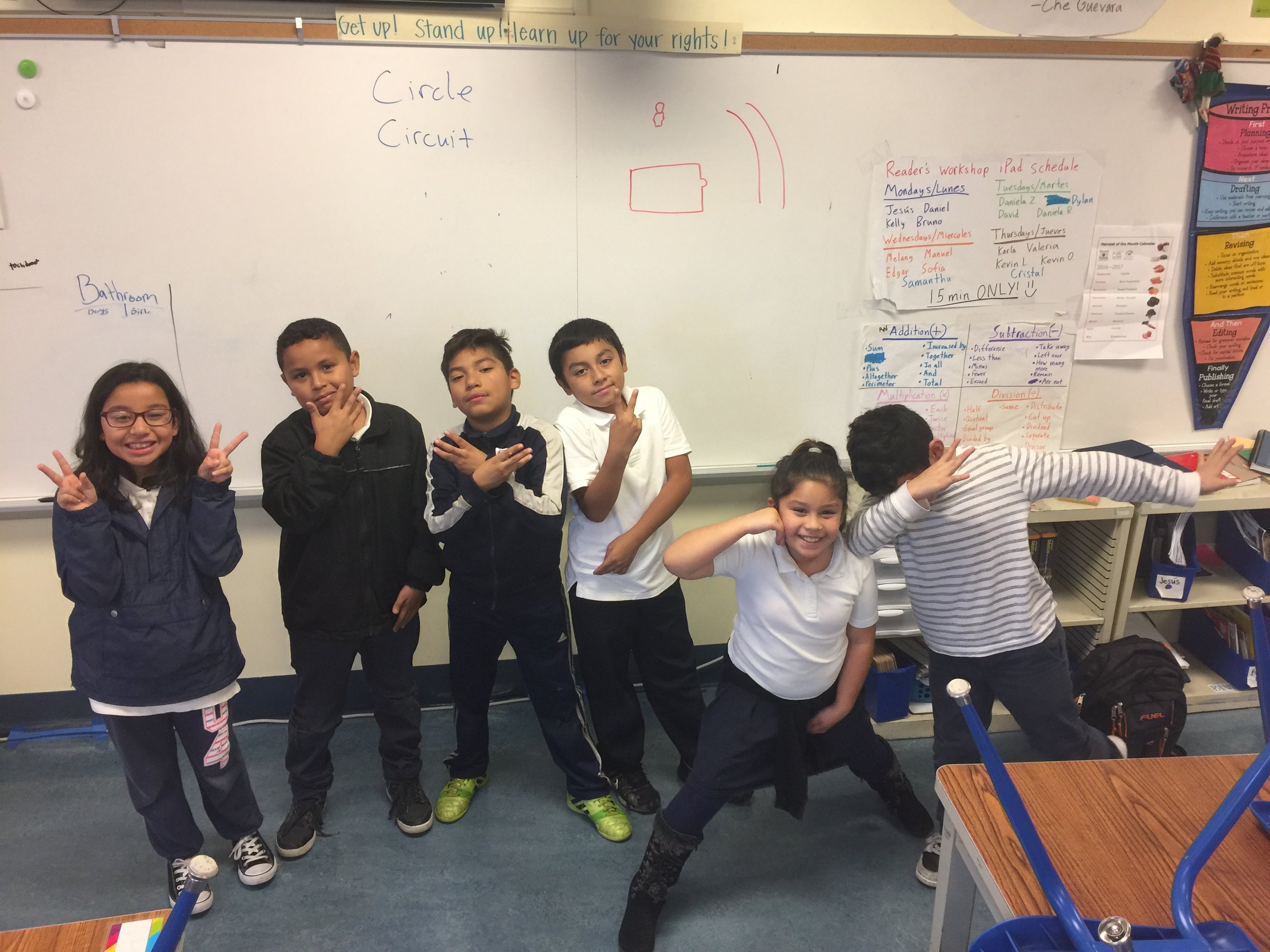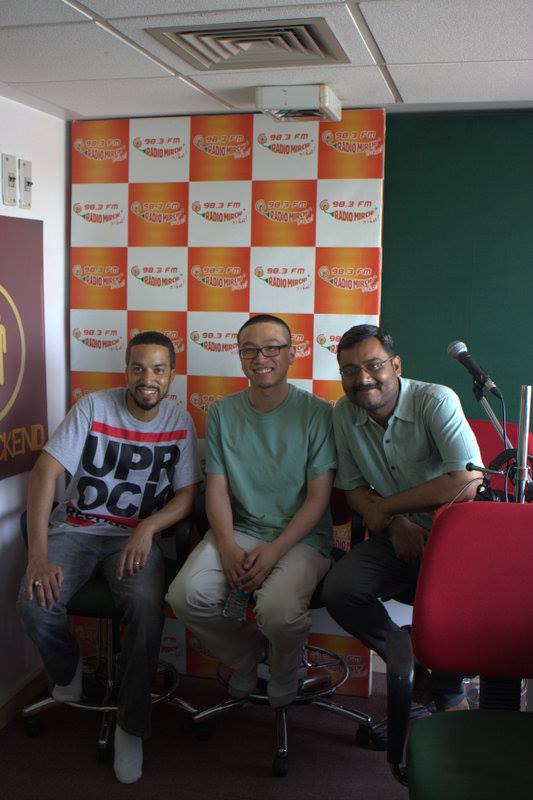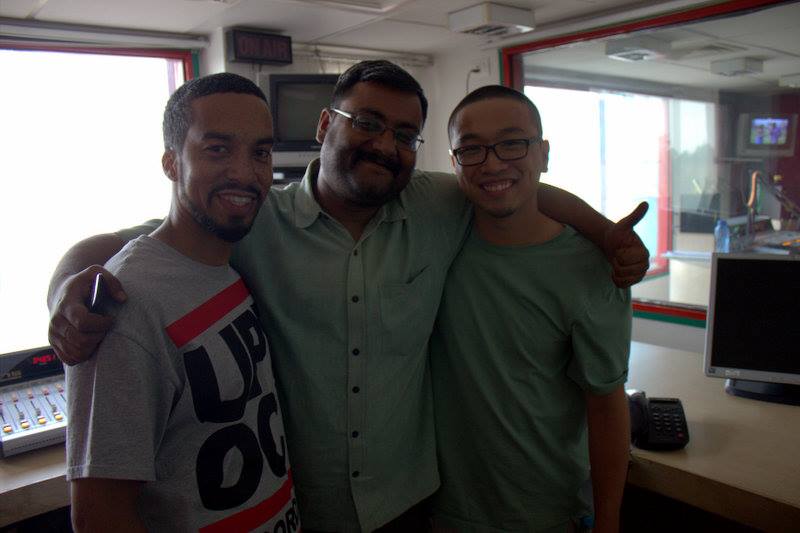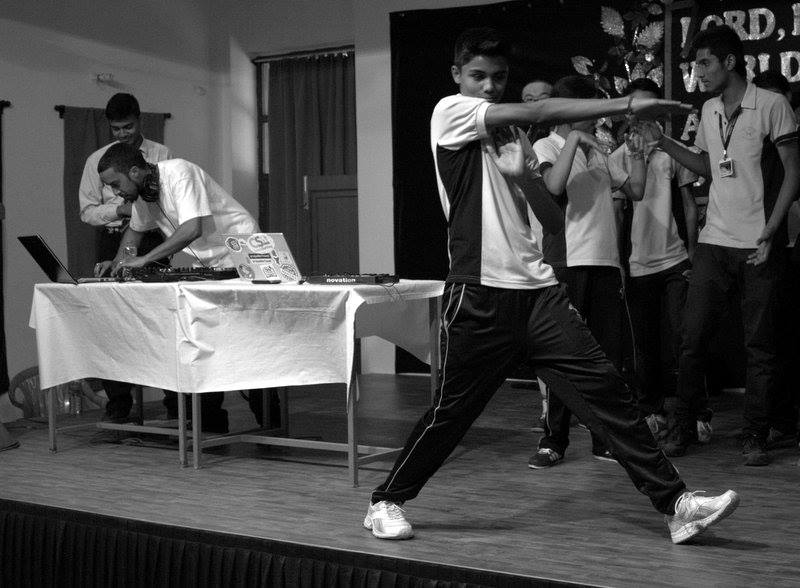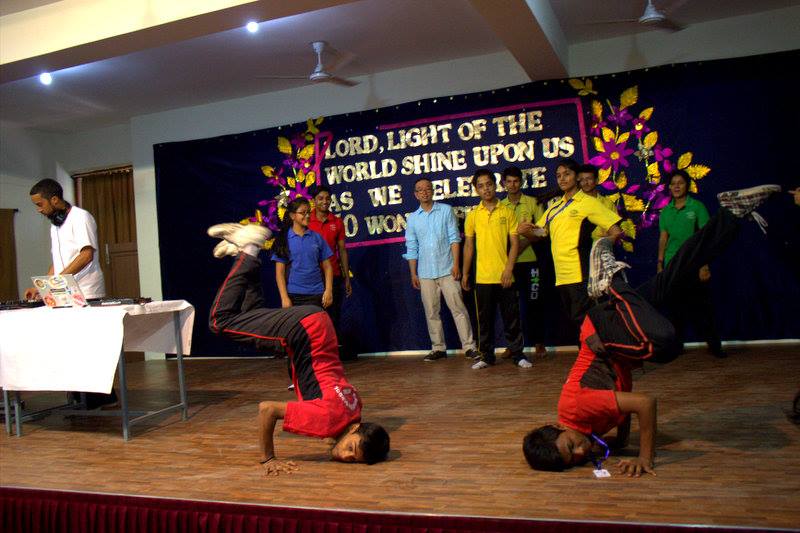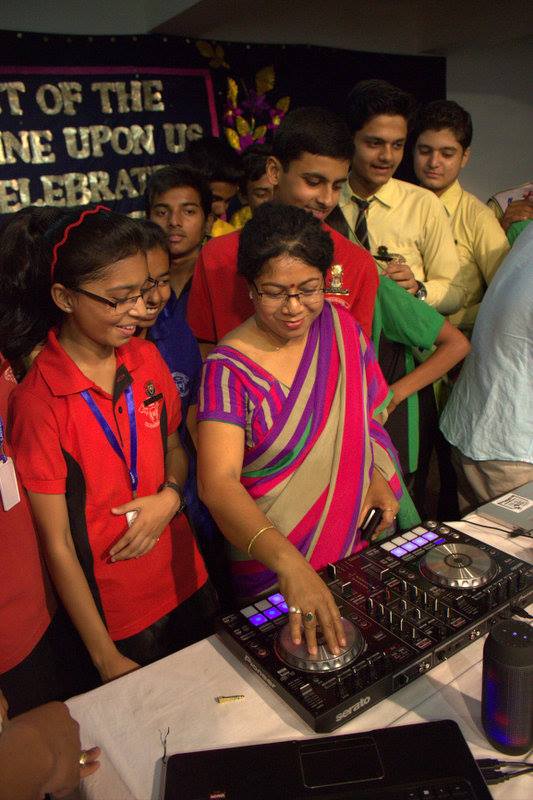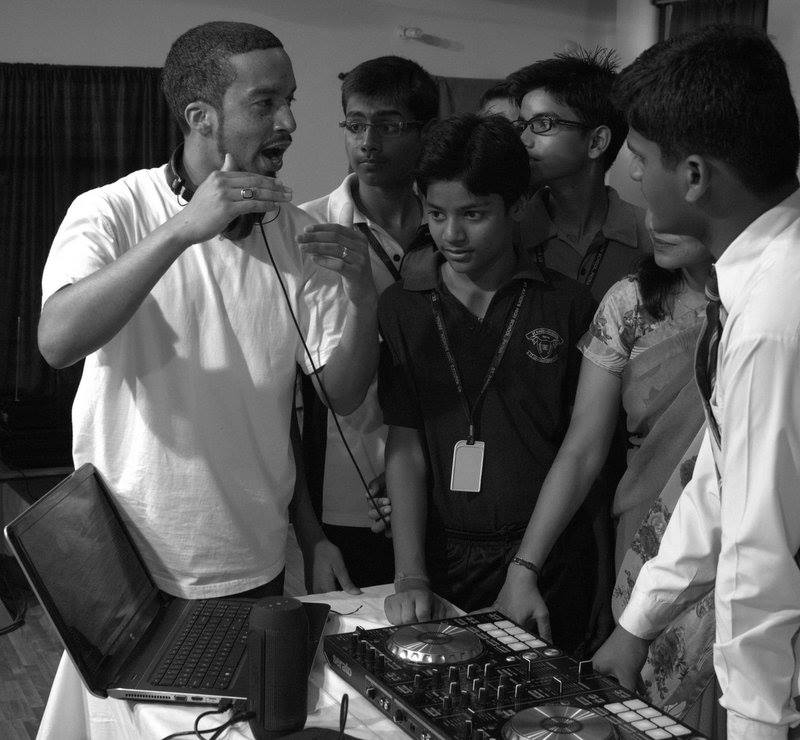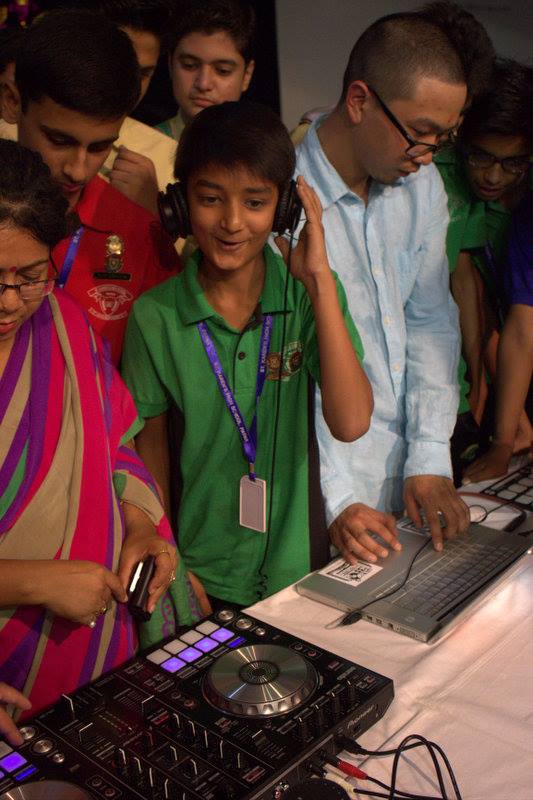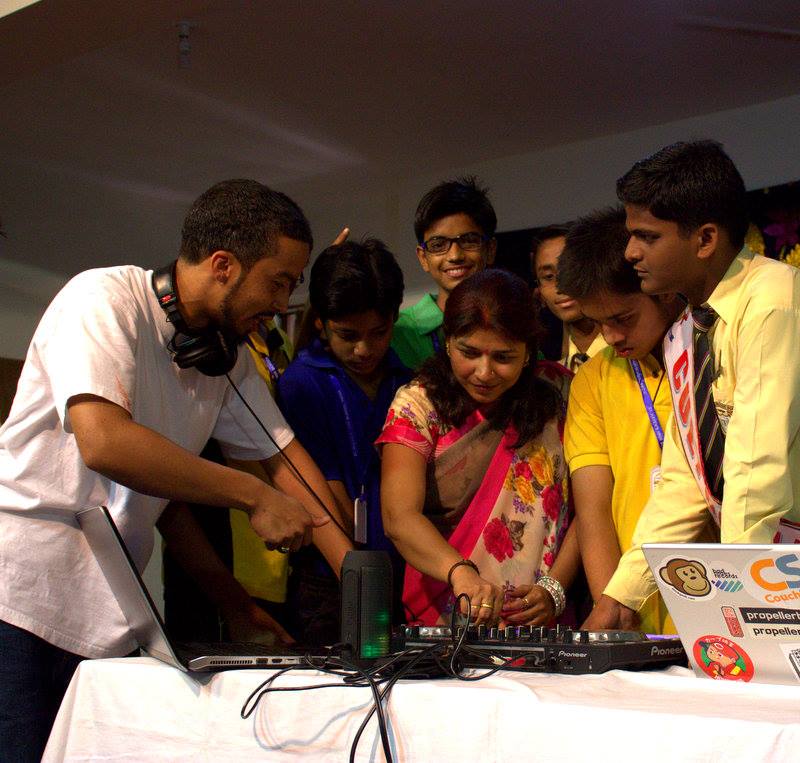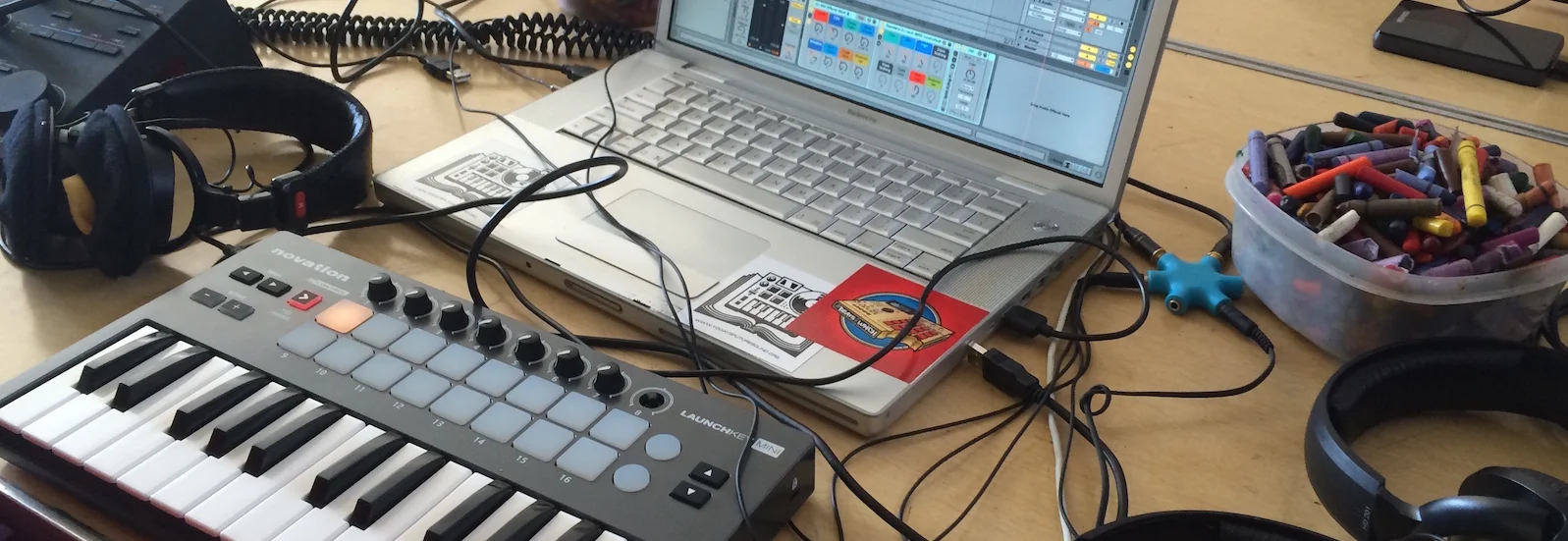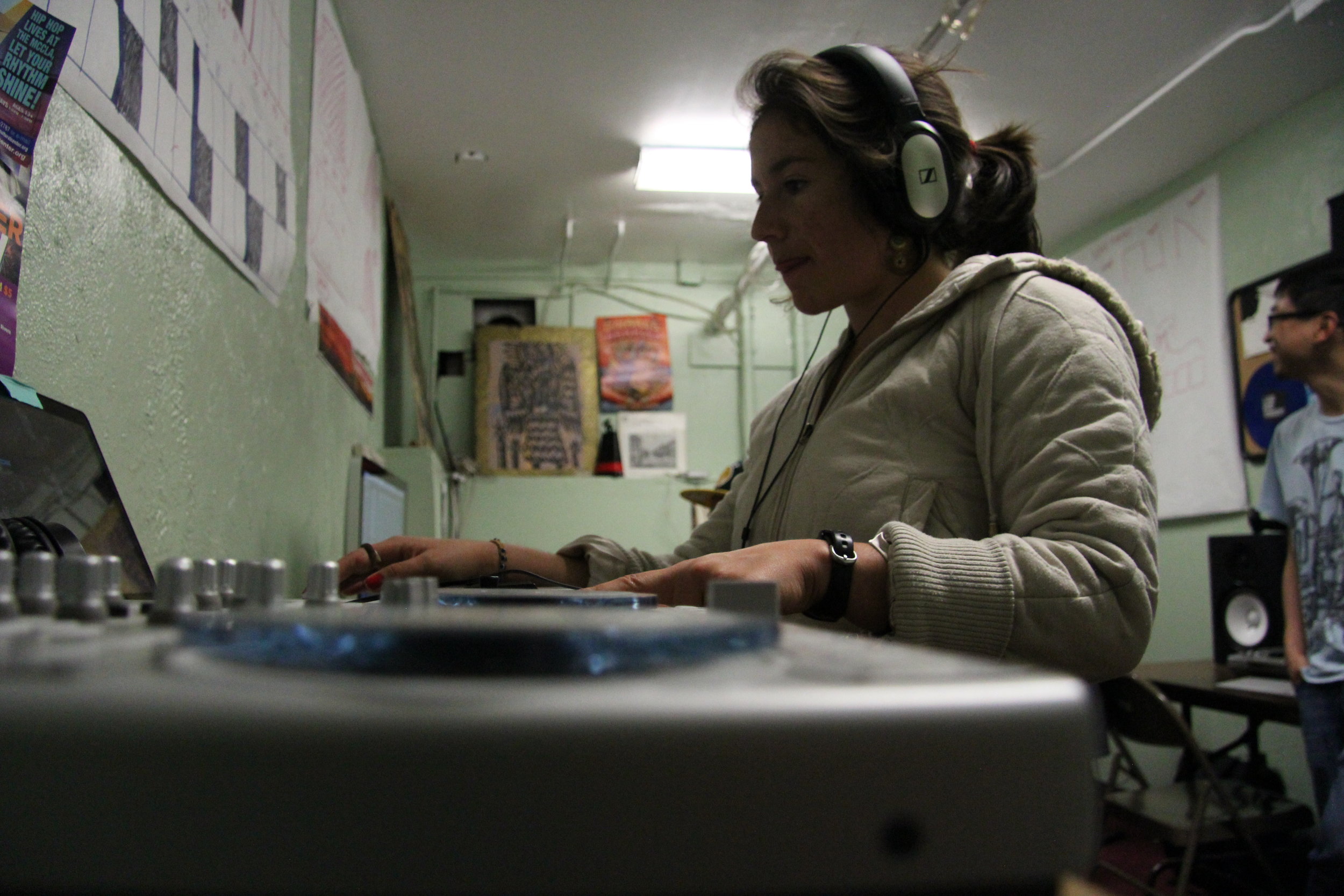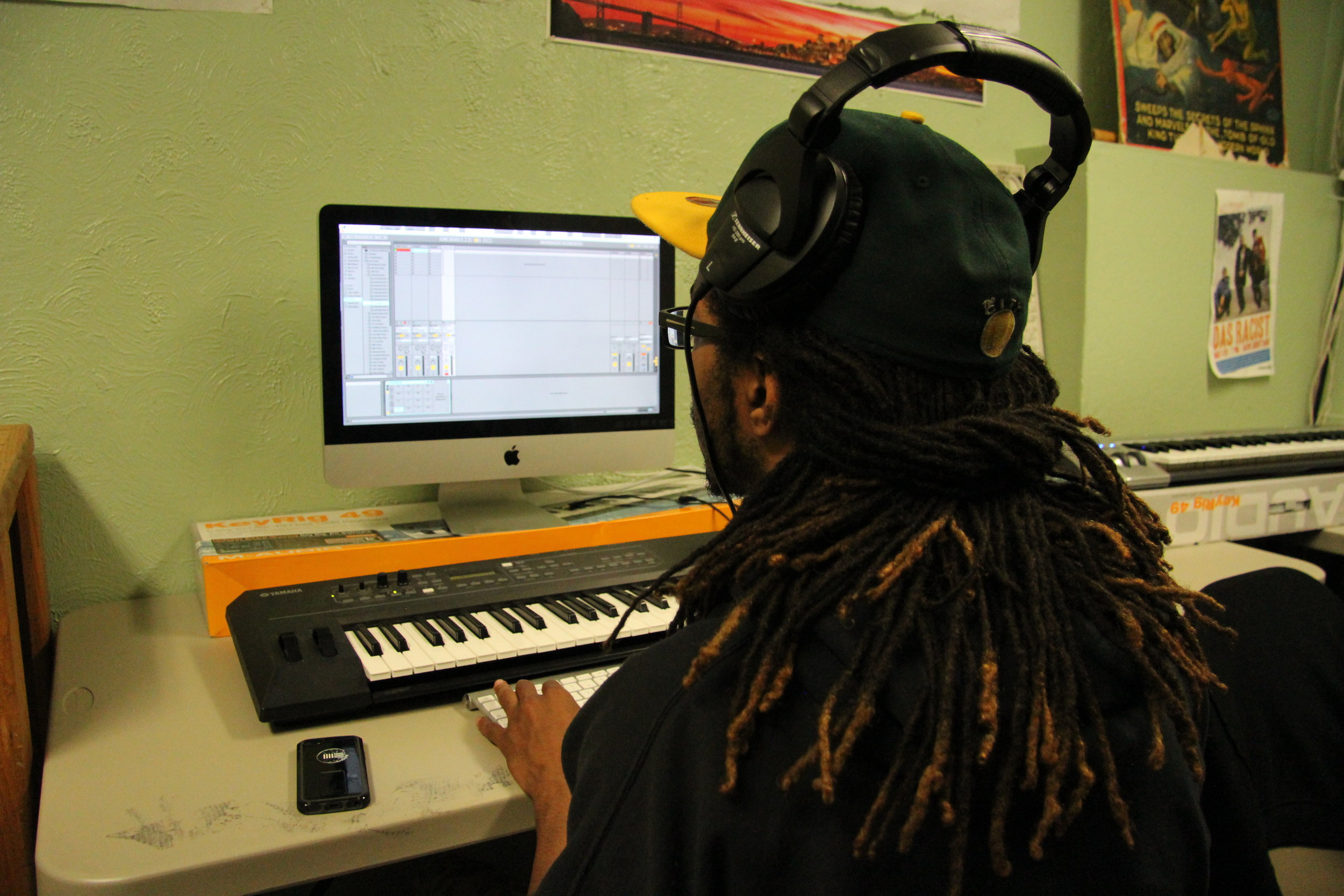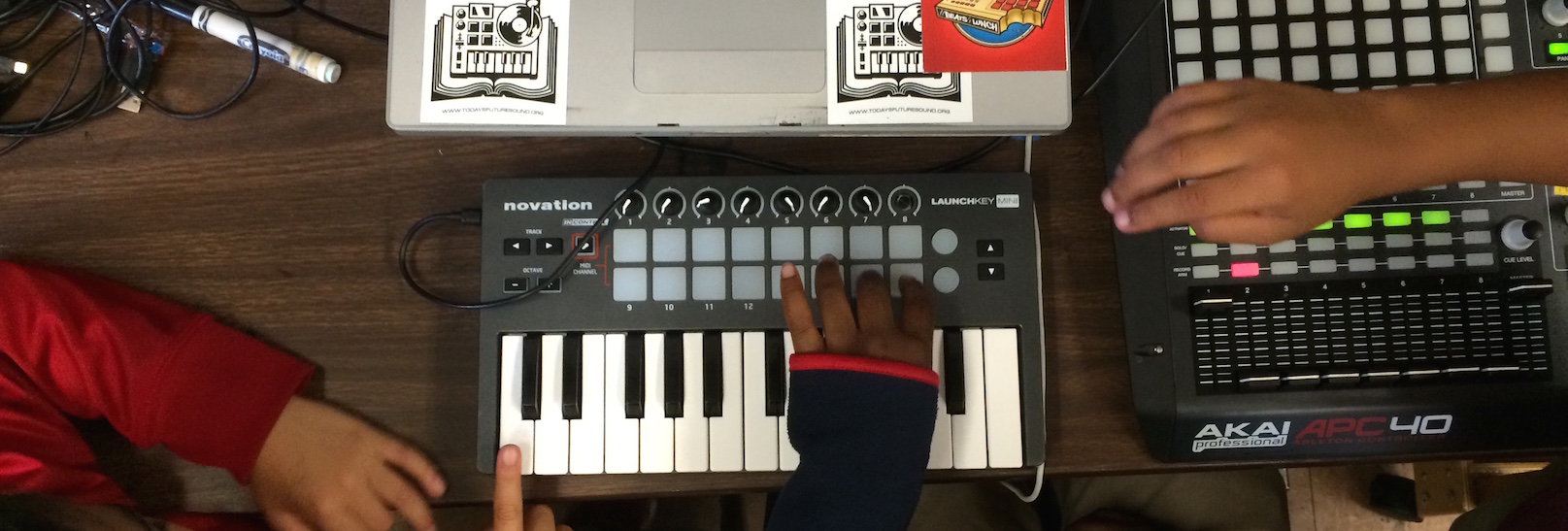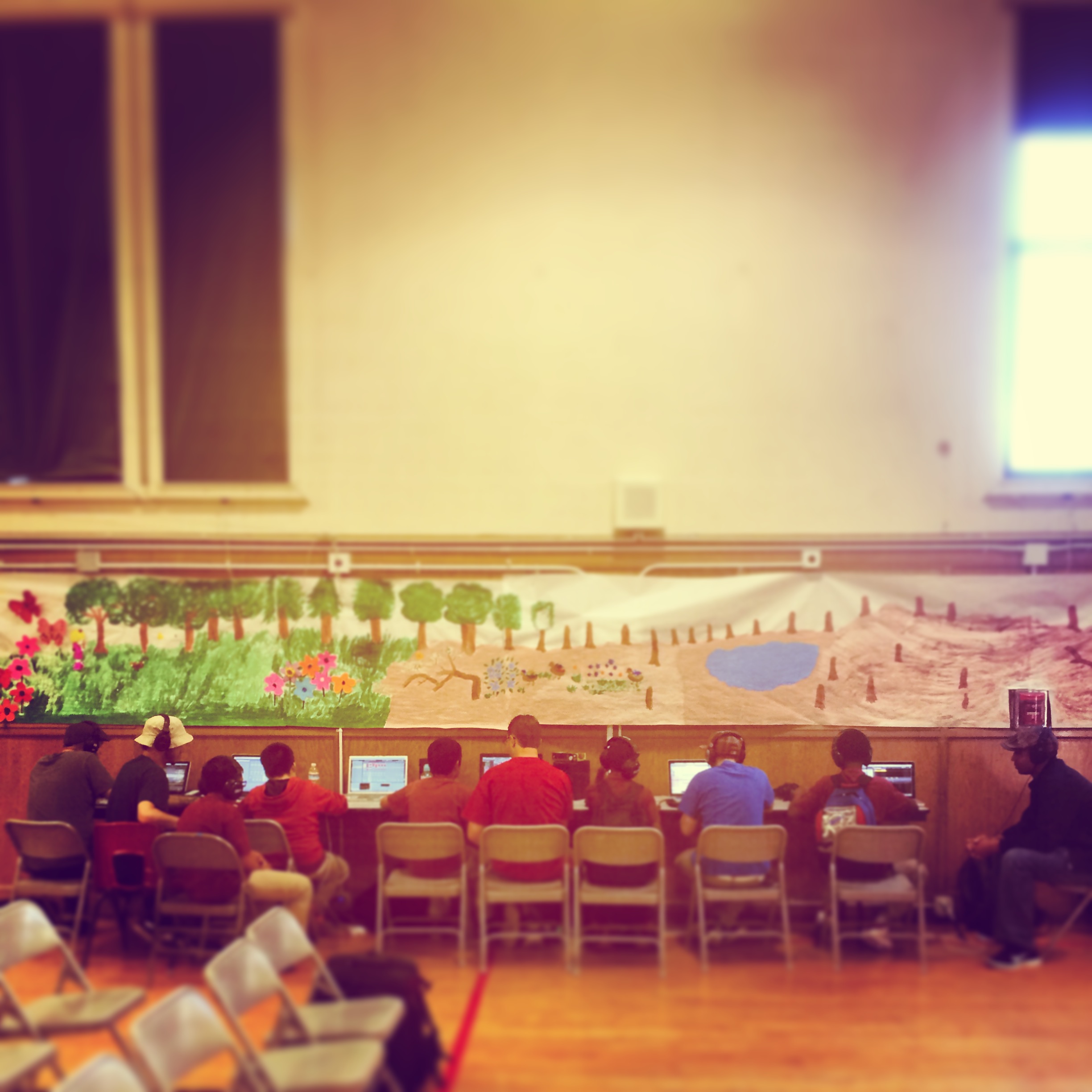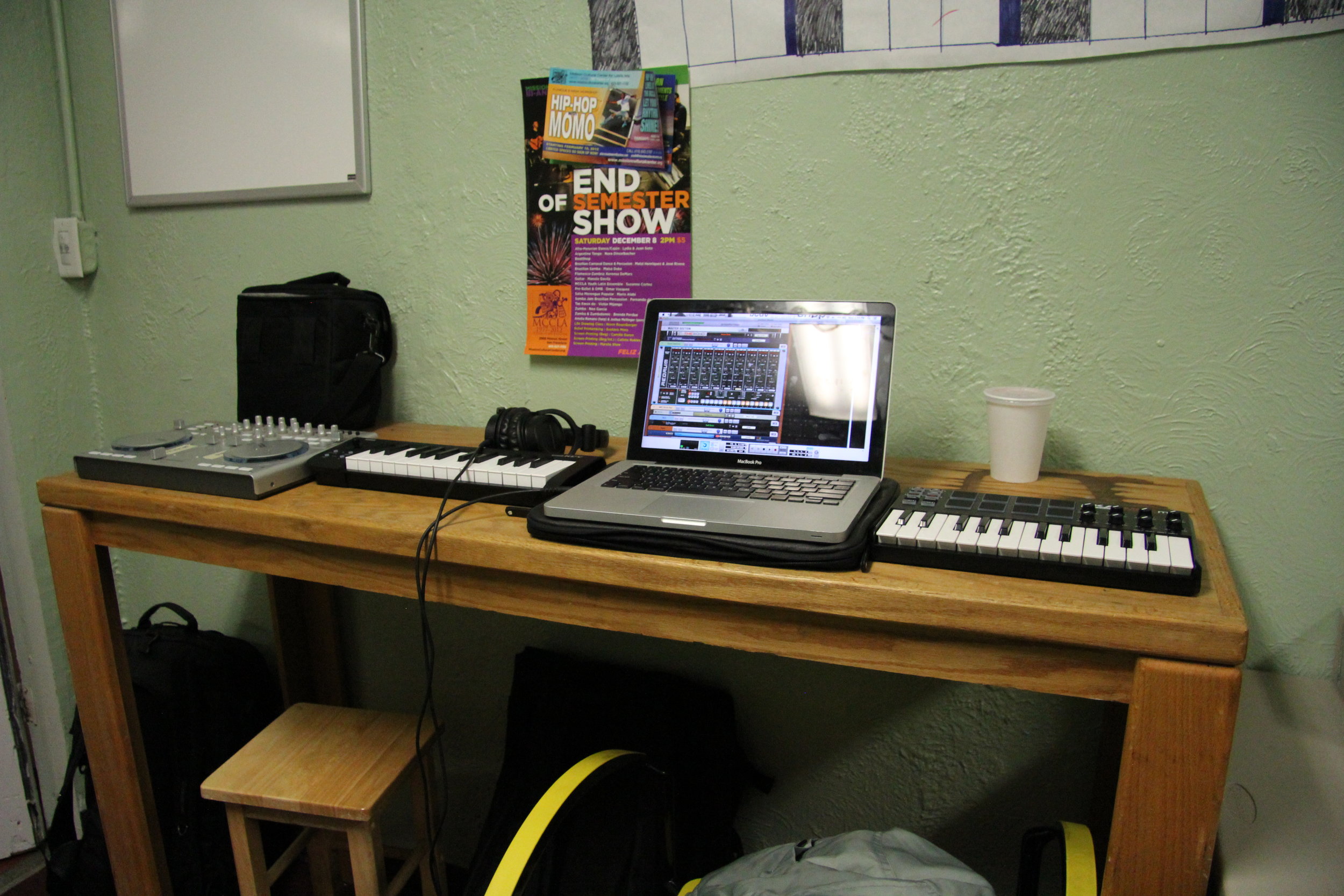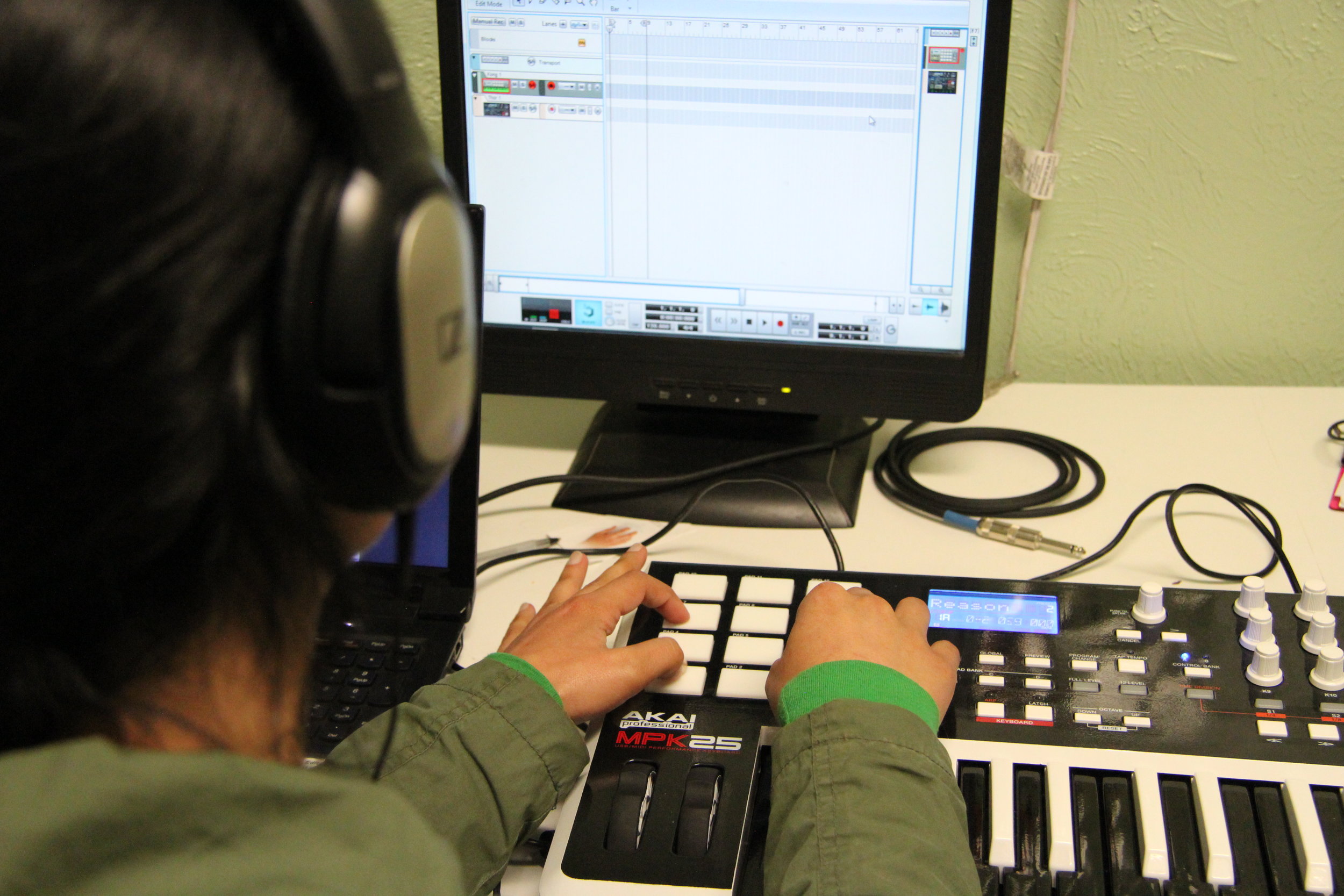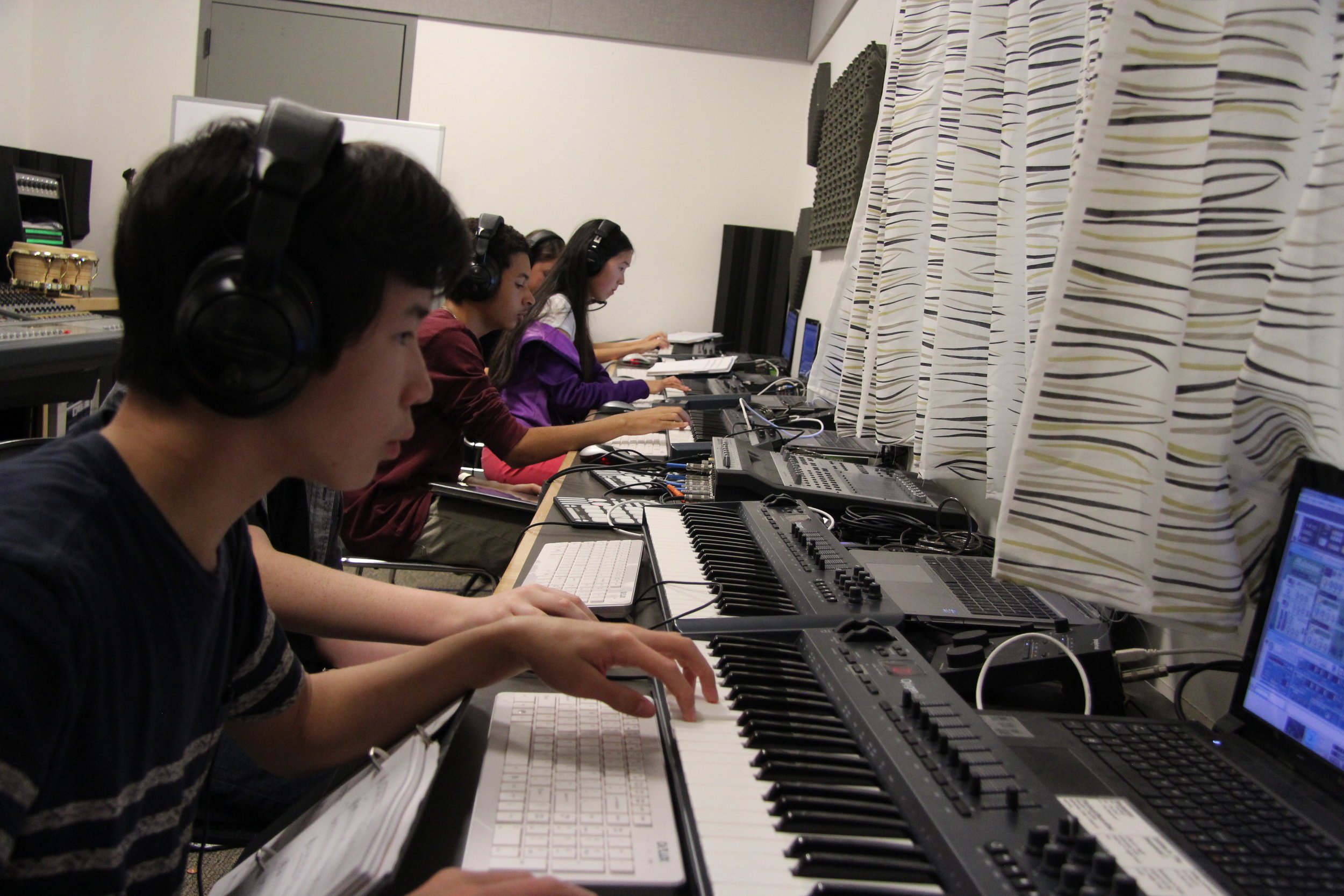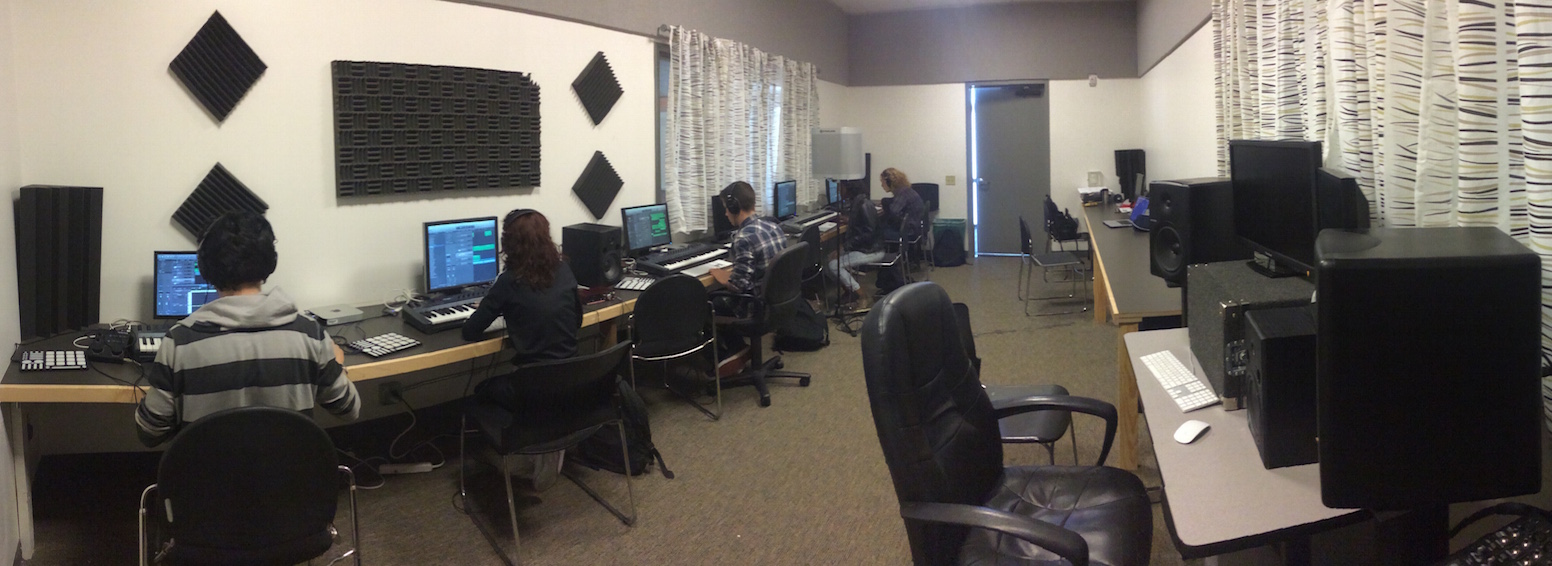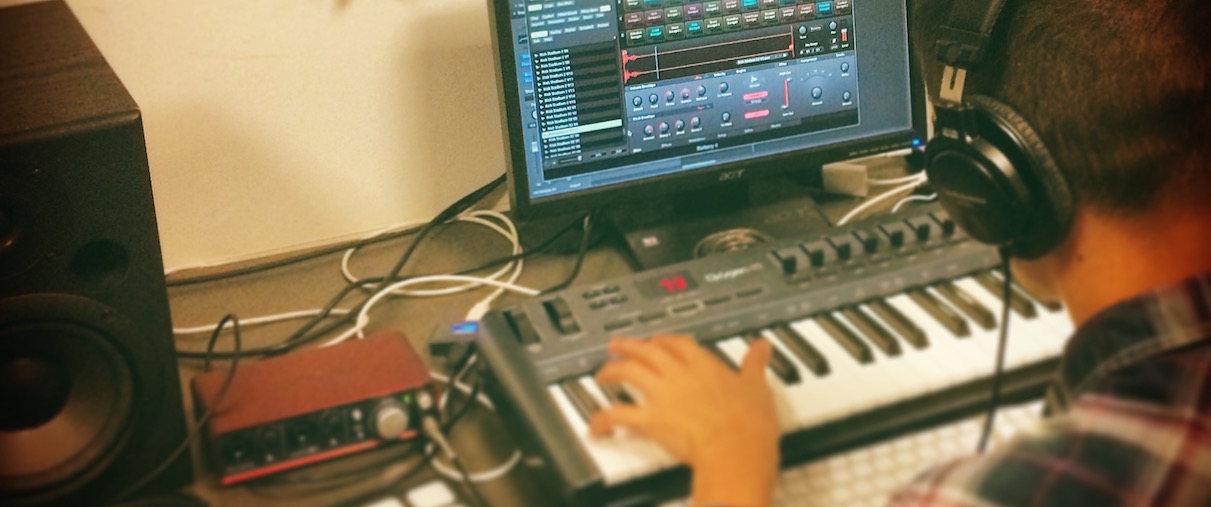We created and installed a beat lab at Bay Area Music Project in Alameda, CA in 2017. During after-school hours in Alameda we teach Beat-making, music production and sound design to 3rd, 4th and 5th graders. The decision to use Ableton Live, a professional standard software in the music industry, in an elementary school classroom, was an innovative experiment that gave us surprisingly harmonious results. It may be the first Ableton Live class for elementary school kids in the world. The program was a huge success and the aptitude for music technology assured us that our confidence in kids as young as 9 years old could create music with this software (given the proper instruction and guidance).
In 2019, our curriculum was expanded and solidified by creating and adapting lesson plans for high school students to younger students. However, our experimental attitude led us to a result not even I have achieved in my 8 years teaching and 14 years producing music. For our beautiful final concert, we transcribed and translated a student’s piece from MIDI notation (computer music notation) to score notation via the free online score notation program, MuseScore, which can accept MIDI notes as a basis for a score. We passed along the sheet music to the String Ensemble teacher and our Elementary school Electronic String Symphony was born. During the live performance, the string ensemble was playing parts from the piece composed and produced by a student, while I was also manipulating, arranging, and DJing synthesizers and drum programming from the student’s original piece. The student, DJ E was playing cello in the String Ensemble during the performance.
This fusion of electronic and acoustic, technologic and traditional is a great example of our philosophy and curriculum, which is a synthesis of traditional music theory and music education pedagogy and new tools that technology has afforded us in the modern age of music creation.
This piece was composed and produced by our 4th grade student, DJ E. The topics we covered this year included:
Drum programming
Counting beats and bars
Sequencing parts using the “piano roll”
Synthesizer programming and preset/patch choice
Remixing using audio tracks
Sound design using effects like Reverb and Delay
For the music theory section we talked about how you can visually interpret the piano roll and see the intervals of most chords — either they have 3+ or 4+ semitone differences. In other words, most chords (in root position) are either made up of minor or major thirds.
Then we talked about how 4 part harmonies can be played by different voices and instruments and how they come together to form chords. Other topics included:
Voice leading
Counter point
Ostinato
Double / Half time
Arranging

